VEGETARIAN & VEGAN BROTHS: Angelica, Beets & Leeks Sipping BrothA delicious, very warming, blood building and blooding moving daily sipping broth for addressing cold, wet stagnant conditions. Good for periods of necessary convalescence.Inspired by a dream of an old woman asking me about being a farmer, “Growing things, you know? You do this?” I said yes. She was old with whispers of silver hair around her ears and chin with the kind of lines on her face that hint to enough smiling. She had a sparkle in the eye that implied wisdom earned hard, a serious deep whisper of a voice, and wore all black with a scarf around her head that had the edges embroidered with big fully blooming salmon-colored roses. She was cleaning wool for dyeing and spinning. This is a skill on my desire list as my twin sister is a master knitter and a weaver since we were 14 years old. She taught herself. I tried what she loved but failed. But dyeing and using a gravity spindle is intriguing. We will be funny old women together. This is my prayer. So my old dream woman in black with beautiful salmon roses around her face had a cast iron pot on the stove that was simmering. She told me to open it and give a gentle stir to the left first, then the right, and inhale deeply. I did this while she described where her Angelica patch grows by the “creek to the south” and why Angelica root was added to this pot of broth and so needed along with beets, leeks, mushroom and more. I woke suddenly trying to hold on to the smell and the dream, with a thank you for the recipe. It’s not new for me to sprinkle Angelica root into broths. Often Chinese Dong Quai root was used but in the last 10 years I’ve shifted to the Angelica archangelica species. When I ran with my home birthing midwife, one of my tasks at each birth was to arrive with broth, meat/veg/vegan based the birthing mom’s desire. It restored her and all attending as we sipped together and tended to the baby coming through. I love the title she gave me, “broth maker” and it definitely belongs on a resume in my mind! Twice a year I gave a broth making class to the new or seasoned moms who did not know how. It was fun. We also covered so much terrain about Angelica in our Monthly Herbal Council #80 - Angelica As Medicine - as we practiced sitting with one plant to share, learn, and grow. I made the dream-inspired broth. Delicious! I’d love to share. Always remember there is room to make this your own with what you have on hand. I give suggestions here and there. A sipping broth is just that, you pour a warm mug full and sip. You can use it as a soup base too, but sipping broths straight has been a thing around here for decades. It’s a soothing and energizing thing the body loves. Trace minerals are extracted and delivered without the need for lots of digestive fire. Nutrient assimilation is easy. I usually have 2 mugs a day when a pit is made until it’s gone. There may be a pause, or not before the next pit happens. The purpose is for organ and immune system restoration and repair. The gut is also supported well with homemade broths for now we know that without a strong gut microbiome, nothing heals well. As a toddler I remember going to my Sicilian great grandmother’s home and being told to enjoy my warm vegetable water always served at arrival (we children definitely balked sometimes beforehand). We were told to drink it anyway and say thank you or give your grandmother a hug. She always made these as an immigrant woman through the depression, mother of 9 children, feeding a household of 13 people daily from a small city plot that did nothing but produce food from every ounce of soil that existed around their home. Hmmmm… maybe the old woman in black with the big salmon roses around her face was her, or her great grandmother… returning to inspire and support… makes me smile. RECIPE: Angelica, Beets & Leeks Sipping BrothYield: I got 3 1/2 quarts - a lot! This is written as a vegan sipping broth. The fat is important for immune function so don’t skip that addition. You can add butter instead of olive or coconut oil or chicken bones as well if you love that. I love butter and went that way. Yes, I know the ingredient list looks long but nothing is odd or hard to find. If you have no Angelica root right now, burdock root, dandelion root, or astragalus root are good substitutes while you get a few ounces of Angelica root in house. INGREDIENTS:
INSTRUCTIONS: 1. So easy! Add everything to a large pot, bring to a boil, and simmer covered for 2-3 hours. 2. Turn heat off and allow to cool, covered, until warm when you hold the pot - maybe 1 hour - then strain into a large bowl using a fine mesh strainer, pressing liquid from the solids (compost solids). That’s it. 3. Serve immediately seasoned with more salt if needed, or cool for later. Store in the refrigerator and rewarm as you dose (2 mugs a day). You can also freeze in mason jars leaving 2-3 inches at the top for future use. Be sure to cool completely in the fridge before freezing to prevent the glass breaking. May you experience the blood building, warming and blood moving effects of this broth that are perfect for most healing processes and for weathering cooler climates and seasons. Your immune system, gut and liver with be grateful and your mind and peripheral nerves will relax as healing energies get reorganized for more profound health.
Let me know how you shifted the recipe and how it turned out too. Much love, Jen 💚 NOTE: use substitutions noted for Angelica root is you have an active bleeding condition, severe hot flashing / nights sweats or heavy menstrual bleeding. Angelica is so good at moving blood and fluids that these few situations ask us to make substitutions. This preparation is not at a therpurtic medicnal dose by any means, but it good to take note even at low doses even in broth. Plants heal! Angelica Root Medicinal Actions: Alterative, analgesic, anti-inflammatory, antimicrobial, antiseptic, anti-rheumatic, antiemetic, antispasmodic, aromatic, antioxidant, astringent, bitter, circulatory stimulant, carminative, diaphoretic, digestive, diuretic, emmenagogue, expectorant, hypotensive, hepatoprotective, nervine, rejuvenates, stimulant, stomachic, tonic, uterine stimulant.
0 Comments
Tulsi of the Mint FamilyThe softening of my heart and deepening of my breath is what I notice first when I'm around Tulsi. The bees love it and the hummmm is mesmerizing and surely healthy for the brain. As you walk up and greet Tulsi, maybe bow, rub a leaf and bend close to smell deeply. There's a pause with the in breath and you draw it in deeper, maybe your belly pushes out too as you try to use all your tiny in between muscles to breath even deeper. Yes, its like that smelling Tulsi. Eyes close and the slow exhale is often audible as the heart recognizes good medicine and a gentle "yes" on every level we inhabit. Every single time I place a bundle in someone's arms to take home fresh and make tea I see this. I see the gentle soft excited commitment of planning to enjoy this in their home as the day wanes. So we'll visit some of the botanical specifics, the medicine Tulsi offers and a recipe for a Tulsi Syrup and Elixir variation. Tulsi is so very versatile to being woven into many recipes for medicine and food and is rather easy to germinate and grow too. Full sun, well drained nourishing soil and frequent pinching will yield abundance from just 1-2 plants. Tulsi also goes by the name Holy Basil and is a basil but yes, it's uniquely and boldly different than culinary Basil (Ocimum basilicum). Although they do have some overlapping properties and applications. I find Tulsi is a bit more adaptable to the general and ever changing garden conditions than Culinary Basil from Italy. This is just a personal observation and experience. When all conditions are great for both, Tulsi grows faster too. Tulsi and Basil are both in the Mint family (Lamiaceae or Labiatae). For review, all mints have:
THE MANY TYPES OF TULSI There are at least three different varieties or species of Tulsi - Holy Basil, and while they can be used somewhat interchangeably, they also have their slight differences in appearance and taste. TULSI RAMA (OCIMUM TENUIFLORUM) Tulsi Rama is the most common species grown in India and easiest Tulsi to find in seed to grow. It likes to grow in full sun with moderate water and fertile well-draining soils. Rama is known for its cooling and mellow flavor. The plant has green leaves, white-to-purplish blossoms, and a green or purplish stem. TULSI KRISHNA (OCIMUM TENUIFLORUM) Tulsi Krishna tastes peppery and has darker green to purple leaves, purple stems, and blossoms. It's has a sturdier stem for me in feel. VANA (OCIMUM GRATISSIMUM) Vana, aka “Forest-type” Tulsi, grows wild on roadsides and in waste places. It has large green leaves and stem, with white blossoms and the plant can easily attain 5 feet tall. Vana Tulsi can overwinter indoors in a container with window sunlight. It can be transplanted in the garden when spring returns. Tulsi MedicineTulsi nourishes and tones as an adaptogen. Herbal adaptogens help the body adapt to physical and emotional stress. Tulsi is one that enhances body resiliency and promotes longevity. It promotes energy, endurance, and helps to boost immunity through stress release and deep restoration so your body becomes the well-designed generator of good strong energy for life. As an antimicrobial herb, it can be used topically or internally to treat bacterial, viral and fungal infections. Tulsi can assist with upper respiratory viruses like the cold or flu. As an expectorant, it eases lung congestion by thinning secretions so they can move, and reduces inflammation. It has steady application of treating for longer periods of time in treating chronic conditions such as bronchitis, and asthma. This regular dosing over time can help us unravel our condition to the best of our ability. Tulsi helps ground us, slows the pace down, settles the energies of the body, and quiets the mental chatter ‘monkey brain’ internal-task-master-critic so we can focus and collect ourselves and wade through what is true and what is a self-abusive head-trip. There's an element of self-compassion and understanding that rises when we drink Tulsi regularly, as if the plant helps us to embody these practices towards ourselves first. We are more likely to radiate this to those around us when we can be kind to ourselves. Mean spirited covert and overt incongruencies within the self struggle and simply cannot flavor the day with regular intake of Tulsi tea as medicine flowing through our tissues. Some herbalists add Tulsi to formulas as a mild gentle cerebral stimulant to aid poor memory, cloudy thinking, or ‘brain fog’ experienced by those in menopause and andropause (yes, the male version of a midlife endocrine change). Those with chronic whole system conditions such as lupus, fibromyalgia, lyme and more claim there is a subtle shift to feeling strengthened from the adaptogenic and mild brain stimulating properties. Some parents are finding Tulsi to be beneficial for their children with attention deficit disorder (ADD) and attention deficit hyperactivity disorder (ADHD). Tulsi has many beneficial actions on the heart, including promoting good circulation, lowering stress-related high blood pressure, and cholesterol levels. Like other mints, Tulsi supports digestion, eases bloating gas, and nausea. It mixes perfectly with fresh ginger root and other mints you love for this purpose. Tulsi also has the pain-relieving aspect of mints. Many herbs, including Tulsi, are Cox 2 Inhibitors and thus, as we are learning, decrease pain and inflammation in sore, stiff and swollen joints, muscles when applied externally and taken internally. Tulsi is high in eugenol, a single isolated constituent that has been studied and is helpful to decrease pain. As the herbalist, I'll continually note but give only a little time to isolated constituent data verbiage. The plants work as a whole spectrum of compounds and there are many we have no names for and have not discovered yet. We simply cannot keep reducing plant to their parts to explain how they work. This is not herbalism. It's a form of basic science that doesn't include relationships and systems that connect things. Herbalism is interested in forming relationships and knowing the plants as whole beings. We grow the plants because we want to know them and enter this relationship that sees each within it, us and the plants, as partners in survival AND in the making of some necessary and needed beauty, together. This makes strong potent medicine. Ways To Take The Medicine InIf you want to make a tincture or elixir of Tulsi, you will want to wait for it to just start flowering and gather the new tender aerial top or flowering racemes and leaves. Also consider leaving some flowers on to reseed for next year. It reseeds easily but will only germinate when soil temperatures get above 70 degrees. They come later in June here in NY but grow quickly and flower fast. Pinching often encourages more flowers. This is a very generous plant! We call it an abundance economy teacher. Tulsi is prepared as medicine in multiple ways as a tea, infused honey, infused oil, syrup, elixir, tincture, vinegar, oxymels (vinegar/honey syrup), in skin creams + massage oils, bath soaks, toothpaste, and in food (try Tulsi-Mint Pesto on some grilled zucchini + eggplant), and drink recipes (tulsi Mojitos are delicious). Tulsi is applied to the body externally as oils and creams, bathed in by adding strong tea to water soaks, yoni steams for infection and softening of the pelvic floor to release trauma and support healing, for body treatments of limpias, facial steams for complexion support, and internally as described by the many products that can be made to support health. TULSI RECIPESThe most common way to prepare Tulsi is as a tea. Holy basil combines well with other herbs, such as rose petal, lemon balm, lavender, ginger, nutmeg, and other spices. It can be brewed in milk and added to Golden Milk made with turmeric. If you don’t grow your own, numerous kinds of Tulsi teas are on the market so you can still enjoy a cozy mug. Tulsi Rose is my favorite way to wind down the day! TULSI TEA INGREDIENTS & DIRECTIONS:
JAY'S FAVORITE TULSI TEA - In Winter & Summer Mix equal parts of dried Tulsi, Peppermint, Nettles Hibiscus flower in a jar and label. Add (optional) honey once steeped 20 minutes and strained. To make, use 2 teaspoons per cup of just boiled water. A few paper thin slices of fresh Ginger root work well in this too. There's always room to sway with your preferences. USE FRESH LEAVES Add chopped leaves to culinary dishes just as you would basil. Freeze leaves in ice cubes to add to summer drinks. Eat a few fresh leaves to get phytonutrients and boost your immunity. Make Tulsi Pesto! TULSI/HOLY BASIL TINCTURE (ALCOHOL EXTRACT) I prefer using fresh Tulsi in tea AND tincture. I do dry 1-2 pounds for our for our family to get through the time of year that when Tulsi isn't growing. We refuse to live without Tulsi in the apothecary these days. I snip the aerial parts (flower tops and leaves), coarsely cut the plant up, and pack a jar full. Usually, with tinctures, we add 80-100 proof alcohol (40-50% alcohol), such as vodka, to cover all the plant. Place lid on jar, label and date, and shake daily for several days. Store out of direct sunlight. Wait the 6 weeks shaking every now and then, and then strain off the plant material through cheese cloth, squeezing out any liquid from the plant, compost it if possible. Store this Tulsi Tincture you just made (!) in brown glass and dose 30-60 drops per day. Consult and herbalist if you need more support figuring your dosing. I LOVE making with an apple-based brandy I get from France for tinctures also, especially with Tulsi. TULSI ELIXIR My favorites for this elixir are good brandy + honey. Tulsi Elixir is spicy, fragrant and delicious! Yes it's becoming a regular apothecary item here. ElderMoon must make this for the community because our Tulsi is divine and we have bees to complete it well with honey from bees who visit the Tulsi bed all summer long until frost (smile). INGREDIENTS & DIRECTIONS:
TULSI INFUSED HONEY (is divine!) I LOVE Tulsi infused honey to take by the spoonful, add to tea, eat on baked goods, or as a delicate hint of flavor added to fresh cut fruits or drizzled on a fresh sliced in half grapefruit as you scoop out the pulp! It's great drizzled on hot buttered baked goods too. INGREDIENTS & DIRECTIONS:
TULSI VINEGAR Again, super easy and great! This can be turned into a Tulsi Oxymel too.
OTHER OPTIONS: You can add honey, maple syrup, agave or molasses to make that syrupy sweet yet tangy edge you like. Herb infused vinegars make popular mocktail concoctions, shrubs, switchels and oxymels. A sipping vinegar or shrub is basically a combination of vinegar, honey, and your chosen plant with mashed fruit. Herbalists prefer to use organic apple cider vinegar because alone it has so many health benefits already. The herb-vinegar-honey-fruit (shrub) or herb-vinegar-honey (oxymel) is used as a mixer to flavor water, sparkling water, club soda, or mixed into cocktails. A "switchel" is an older term used when making with cider vinegar that's sweetened with molasses or pure Maple or Birch syrup. Call it what you like. These are good tasting and hold the healing abilities of the plants chosen delivered to the body easily. Thank you for wandering through and I pray this gives that nudge to get mixing and pouring, tasting, and planning for more as you stock your apothecary well with simple green medicines. Enjoy, Jen
14 ways to Support Earth & YouWhen was the last time you were called to action?Valentines Day. February 14th. The Moon is rising and we're preparing to sauna outside in the dark. My dearest friend was suddenly killed today. Yes, big sigh. Still. It happened years ago, and yet... So now it's like a full cup of 100% super bitter Ceremonial Cacao these days. Life will deliver it with no additions to temper the taste and yet every single morsel supports growth and love. We may sigh. We may cough a little. We can learn to work with the intensity of it. We can even get really good at it. Each time this day rolls around I feel her so very close and shake off a bit more of the tragic trauma that called me to action back then, leaning on skills and strength I hadn't yet known I had. Her soul was as confused and stunned as mine and yet we worked it through as we guided each other like sisters do. She guided my actions for weeks and months to follow in tending to her two babies, then 8 months and 3 years old, who survived the accident she did not. I left my marriage 4 months after her death with my two babies clinging to me. Like any death, it was time. When the going seems really tough there's magic afoot in the form of service, connection, healing, and giving. We have choice. What did you choose the last time you were called to action? Did you crumble and collapse? Spiral out and fall down the rabbit hole? Sit for a while? Or hide? This happens. Honesty and compassion for how we roll is a radical and refreshing thing. And maybe you rocked it? We get to receive more because it's life. What will you choose and how will you roll next time? So what's the language you love today when we turn our heart and focus to Earth for healing, inspiration, and service? It's a give and take thing. Earth is a holy being. A divine one that is healer. A compassionate one we can sit with in our darkest of times. A supportive one with sudden death where all are held as one leaves between breaths in a blink. A nurturing one supporting the slow unfurl to the truth of being held and accountable to a larger unfolding because we are part of it all and belong. Comfort will not rule your day or time with Earth, but is can sometimes and damn it is so glorious when this happens! In feeling into the love I have for a sister who shaped my path long ago while she prepared to go, I made a spontaneous group of service actions that feed heart and Earth. Add. Edit. Make it yours. Pick one thing and do it well. At least try. We can only ensure failing if we don't try. Enjoy - Hand to Heart & May Your Weekend Be Blessed, Jen 1. Grow Plants. Support Growers of Plants. Well ya knew I had to start here! Grow what you can. Agree to fail in order to learn sometimes and jump ecstatically when you succeed. Learn about soil. Start seeds. Root your own clippings. Pick one thing and try. Support CSA farms for your local and not-so-local food, seeds, and medicine plants. Check out this SEED CSA class or Permaculture Course here: Indigenous Seed Sovereignty. Make it part of you and your political + existence fabric that requires the needs of plants be woven into all you care about as a priority for your daily life. We have a few old shrubs and trees dying here that are sterile and ornamental. This kind of planting is something that was a trend long ago, and still is by some. We're choosing to create chemical free edible landscapes that feed us, the bees, birds, animals and plants, elements, and ultimately Earth through small-scale bio-diverse ecosystems. So we give a good death, honor, and invite change to who is here. 2. Sit with Trees. Follow TreeSisters. Become a Member. I'm a Water Carrier TreeSister and I've been in relationship with these women for about 6 years now. The replanting of green corridors where clear cutting has devastated the tropical rain forests is so very close to my heart. TreeSisters funds the work of local communities in the devastated areas to seed, tend, and replant the trees they need to restore the land and keep the ecosystem alive. This supports Earth. And all of us. Some have said to me, "But my neighbor needs help too so why give to this?" and my response is give the same and give to two causes so you make ripples locally and globally. The embodiment of being a restorative species of human that thrives is our focus. I choose to support they're global work and donate from all income through ElderMoon. Even when it was 5-9$/month and my business was a baby, I made it a priority. Each year I increase our giving to the trees as we grow with this organization. You're already doing this if you've taken a class, had a consult, acquired a tincture or used our cream. Thank you. Link here: TreeSisters classes and Monthly Moon Calls. 3. Learn This Indigenous Water Song & Sing to Water Daily. Water is Life. How will you connect with the waters that feed your life? How will you exchange your internal waters daily to feed your healing and evolution? Hydrotherapy, sweats, and drinking are considerations, but will you grieve and move the old tears petrified in your heart? Sit with water and sing and watch how gorgeous help comes your way to defrosting that which holds you bound-up and petrified. Make it a private practice to sing to water. Link Here: 'The WATER SONG'. Play it in the car and SING loud until you got it. I'm walking with you on this one! 4. Connecting to Earth- Re-calibrating Your Resonance The Earth has the equivalent of a heartbeat, which is a measurable frequency called the Schumann Resonance. Consider this deeply as things are measurably changing for us. First, all life on Earth is calibrated to the frequency of the planet. Everything from our brain waves and biorhythms to our states of consciousness are directly correlated to the Earth’s frequencies. Second, the Schumann Resonance has been steady at 7.83Hz until three years ago when it began to accelerate to somewhere in the 15 to 25Hz levels. Less than one month ago, on January 31, the Schumann Resonance had reached frequencies of 36+ for the first time in recorded history. This is a big deal. The Earth is rapidly shifting in vibration. What this means for us is that since 2014 we are all being exposed to and required to calibrate to these accelerated planetary frequencies if we want to evolve and live with the new Earth. Scientists tell us that not only is the frequency of Earth accelerating, but changes are also in process in the sun and entire solar system. So now what? How do we "do this" re-calibration? What if nature scares me? And how does this help Earth? Get outside. (Say it again.) Take off your sunglasses sometimes so natural light can enter your brain and pineal gland to re-calibrate your body. Lay on Earth. Moon gaze and track the phases and how you feel within them. Hike in forests, meadows, and mountains, and swim in oceans and streams 'just because' with no other agenda than 'I'm re-calibrating my system'. Google 528hertz music and listen often. We can be our most authentic powerful expression when we upgrade regularly yet honor where we've been. To look back, to honor, while we move forward is the pace. 5. Make Hawthorn-Rosehip-Ginger Jam & Eat Daily Until Gone Feeding your heart can be this simple and delicious. Make a batch and take 2 tablespoons daily in yogurt, oatmeal, on toast, with goat or cream cheese, tucked into pastries and biscuits. Make a double batch and give to a friend. Hawthorn-Rose Hip Ginger Jam INGREDIENTS:
1. Boil Hawthorn Berries for 1 hour at the lowest simmer, covered. Turn off and allow to it for 1-4 hour covered. Strain and keep liquid, compost solids. 2. Return liquid to a simmer and pour over the Rose Hips in a bowl you can also cover and let sit for ½ hour. Place in the blender and reserve a small amount of liquid to thin as needed. Add all other ingredients and blend. This is like pudding and thick so add very small amounts of liquid just enough to keep the blender able to work. 3. Strain, or push through a sieve – not too fine – just to catch any stray seeds. 4. To Use: 1-2 TB/day is therapeutic for the heart. Stir into plain yogurt or use any way you use jam. Yield 2 ½ cups – store in refrigerator and use up. You can make larger batches but freeze some for it will keep about 2 weeks in the frig thanks to the lemon, honey and ginger which are good for the heart and have preservative properties. 6. Start Your Home Apothecary - Keep Your Medicines Close Whether you have one already, never considered this for yourself, or have a deep want for one, do it. Dedicate a small space, like a cabinet or book shelf and just start. If it's a mess and growing then sit there and envision the next step on how the space will flow as an extension of Earth in your home. Make it functional. entice beauty, and maybe take a class to get your toes wet or do a full body plunge. Here at ElderMoon are several options for you: Our Birthing an Herbalist course is a bigger beautiful commitment but the Plant Diets and Monthly Herbal Councils can be great for giving little tastes with big returns as things evolve for you around turning to Earth first for healing and treatments. Tending your apothecary will teach you. Small steps. Say yes. 7. A Simple Read: Reflections From A Hopi Elder While this has been circulating for a while, the heart needs constant circulation of goodness to nourish it. Let's read it again. “You have been telling the people that this is the eleventh hour, now you must go back and tell the people that this is the hour. And there are things to be considered: Where are you living? What are you doing? What are your relationships? Are you in right relation? Where is your water? Know your garden. It is time to speak your truth. Create your community. Be good to each other. And do not look outside yourself for the leaders. We are the ones we’ve been waiting for.” Aho. Sweet Gratitude My Hopi Elder 8. What have you made with your hands lately that you gifted to Earth? I used to work with clay years ago spinning amazing gifts and harvesting from clay seams along the Esopus Creek in the mountains where I lived. Quite spontaneous the love of my hands working clay surfaced again. So I received some red clay from New Mexico though one of those friend of a friend channels and made a simple pinch pot in minutes which I'm calling my "Prayer Pot for Earth". I left my first one out near my favorite Black Birch tree filled with Roses and Prayers for Earth. It's part honoring Earth through Earth magic ways and part prep work for myself for our Plant Diet with Birch and Being an EdgeWalker in March 2020. (Join us here!) I call it "Birch's idea" (smile) for it dawned on me while I sat by the stream with this tree and watched the sun rise while it snowed and was sooo very quiet. These are the kind of places where the heart can be heard clear. So what are you making with your hands? And what can you give to Earth as a healing medicine for Earth with prayers for connection? (Psst...start with food you make if you draw a blank! Leave little plates outside or morsels tucked under bushes. Create paintings or poems and gift them privately. Make an outside garden altar. Offer tinctures or teas you made. Pilgrimage to sacred favorite local sites to deliver one flower you grew or a slice of homemade bread. What popped into your head just now? Follow it... 9. Create a Sacred Fire - Gather Friends Sit with Fire. Honor how this element feeds our heart and keeps life moving. Cyrus was burning 'things' he spontaneously knew he had to let go of one night as we sat with a Sacred Fire and Fire responded so noticeably (!) to his private heart spoken concerns as he faced his teens with all the changes of becoming a man nipping at his heels. Sitting with a candle alone and quiet can be just as potent. Beeswax candles are from Earth and made by the bees and humans working together. It's complicated, yes. We are right here now and I love to get or make my beeswax candles for moments when Earth work, medicine, and magic are called for. Travel inward to the core of Earth, The Heart of Earth, while fire gazing and bring your willingness to honor change. See how your heart feels after such an exchange and collaboration with Earth and Fire. On the practical side, support your local fire department in ways that feel heartfelt. We participate in they're fund raisers with community chicken dinners and bakes sales. Around here we may differ with politics at times but we're clear about what to do if fire comes to the land and our homes. Donate resources and prayer time to wild fire causes that help the workers, people, animals and Earth. Fire has purpose but can be hard to align with sometimes. We're in this together. How do you honor Fire as a healing force with Earth? 10. Cleaning & Clearing with Earth's Health in Mind Making our own cleaning products happened when my older boys were young and I wanted to show them cleaning skills but they almost passed out from the fumes. We stopped using chemical cleaners that very day. All we use is a homemade soft scrub I call 'Earth Paste', a vinegar spray, and liquid castile soap around here + infused oils with a little beeswax for wood cleaning. What goes down the drain goes into Earth and our water and then back into our bodies. Simple searches for recipes are numerous and fun until you find what you like. Earth Paste Soft Scrub Recipe: INGREDIENTS
To Use: Apply the amount desired to a cloth or scrub brush and apply to a dirty surface. Allow the scrub cleaner to sit for a couple of minutes. Wipe the surface with a damp cloth. Makes 1 1/4 cups of scrub cleaner 11. Sleep Well One of my favorite non-beeswax candles! Napping is a skill I re-learned from each of my babies and I decided not to stop with #3. I now remind Cyrus to nap when it seems he would benefit and forgets. So how does napping help Earth? We become healthier and make our best decisions when we rest enough. We need less medicine too. And I know for me I make less messes of the emotional kind! Here's one of the many super-cool facts that stay with me always from studying our anatomy & physiology. Did you know that our hearts are in a state of rest more than they work in order to work as hard as they do? Yes! This is my best way to say it. Let's follow our hearts and how they teach through how they work and make restoration a necessary thing by honoring a better rest to work ratio. How can we get to the root of the sleep troubles? Is it needing fresh air and natural light, exercise, more plant based calcium, stress management adjustments, more quality food, better water, or anti-angst skills? Name it. Make it happen. Learn about 1st and 2nd sleep cycles here as I work with my herbal students on what is needed for plants to work well as medicine. If you're sleeping 7-8 hours per night then you're sleep deprived! They have it all wrong but we can learn and change and follow what the body needs anyway. Implement changes in your way with the sleep these bodies require to be well. And for the record, let's burn better candles too. Plant based or beeswax with NO chemical-scents. Your body and Earth thank you. 12. Make & Tend an Altar for Prayer & Listening Altars are doorways to what we hold as sacred and divine. Created and tended, an altar space can inspire, ease tension and anxiety by changing our brain waves quickly with steady practice, and help us connect to a larger sense of self that knows the answers we seek and also knows how to deliver them well-timed. It can be a private practice or communal one. It's in these moments of standing before an altar that we can calm the body and mind enough to listen and speak well, on the inside, as we ask for help or pray for what is needed and desired. Make an altar for Earth. Tend it well. Consider a simple web search for how-to guides if this is new to you and find one that resonates with who you are. 13. Support Bees Thriving I guess my first thought would be to get educated. The relationship between bees, plants and our food and medicine is so intertwined. Did you know that 60% of all the medicine plants harvested go to labs making modern prescription drugs? Yes. We even need bees for the raw material to make the 'synthetics' meds. We need bees. Period. We've literally evolved around how they live and thrive and shape this world with plants. We have a few thriving hives here at ElderMoon and the gardens are noticeably stronger and healthier with the bees here. The bees are healthier with the medicine plants around too. And while swarms happen and I get sad at first, I also find joy in knowing some of our bees are going rogue and repopulating the wild. Three simple things you can do to support the bees: First, learn where your local beekeepers are and find one you like that speaks lovingly about the privilege of what they get to do with the bees. Trust your gut and support a good beekeeper who ensures the bees are happy and have overflow always. Second, stop all chemical lawn and garden care products and support chemical-free farms that think and act with biodiversity at the forefront of all they do (not mono-cropping). Yes, the great move to almond milk drinking has created bee hive collapsing due to the increase in mono-cropping of almonds here in the southwestern US. So we think we're doing one great thing but then we see how nature responds and have to learn more. Bio-diversity is the way. Third, use honey as a medicine and honor it as such with conservation in mind. 14. Cacao LOVE. Learn how to support Cacao farmers. While today 2/14 is often associated with chocolate and has been for some time, not all chocolates are great for us or Earth. It has to do with us and what we've agreed to in the name of allowing chocolate manufacturers to call the shots. The farmers have suffered. The Cacao trees have suffered. So has the quality and health benefits. And so has Earth.
But we can make new agreements. Right now. Can we agree to support the ecologically sustainable way of the Indigenous Ceremonial Cacao farming families and make this a lasting commitment. Support the farmers who are closest to Earth on this one. If a company does not share their sourcing and practices then I do not buy from them. Period. Transparency is part of my agreement. I want the trees supported and the I want the families that tend the trees supported, all in the name of supporting Earth. Will you join me on this? Link Here: HeartBlood Cacao is one company I love. Thank you. What would you add or change here for you? I'd love to hear from you. So Much Love, Jen EASE with LemongrassI notice things. You do too. Maybe you haven't given much thought to Lemongrass, eh? That's surely because your mind and heart have other equally necessary things to consider and dance with. For decades now I've been keeping Lemongrass close. I tuck 2-3 plants in each year in places where I can really see it due the stunning visual presence. Lemongrass looks so different from all the others in my garden and gives more depth and dimension to the space for me. Then I move in close and rustle the leaves around down to the base and the aroma spirals up and drops me to stillness. The effort is small to have this medicinal + nourishing plant close. It takes a small piece of garden space or a medium sized pot, sunlight, water you drink too, and a seedling easily found in spring with all the veggie and herbs AND only costs a few dollars. Once set up and planted, it's all about enjoying the growing season together before harvest time. Buying Lemongrass bulbs in the store to cook with is great. Growing is easy and so much more vibrant and aromatic for your dishes. Cooking with it means "discarding the outer leaves and only keeping the tender inner core for dishes". I suggest putting all the discarded parts into a mason jar or tea pot with just boiled water, let it steep 20 minutes, and enjoy it as a tea while you enjoy your cooking. It's delicious! And it's a beautiful medicinal too with a broad range of benefits. We'll drop into some of the medicinal applications here for why it's great to invest a few dollars and a bit of waiting in order to harvest and have hundreds of dollars worth a few plants at your finger tips for cooking AND medicine. Have you noticed the price of one stalk? One Lemongrass plant provide many bulbs and mid stems that I freeze. Being A Tropical Plant Means Death in NYSo I watch for the magenta colored stems at the base of the plant that come with the cooling nights of late August to September. I uproot the whole plant giving a fully honored good death that ensures I get all of the bulbous ends that are prized for cooking. If it winters over near you then you slice at ground level with a good sharp blade and you get regeneration stalks. Lucky you! With this massive clump of Lemongrass uprooted I then tease the stalks apart and begin the gleaning process. Shade or sun, with music, silence or singing, having lemonade or a beer is all up to each as you do the good work. I then separate into 4 working piles: 1. the long leaf blades for making 'tea rings' - dry for tea/infusions 2. the sturdy bulbs with about 10 inches of stalk - freeze for cooking and medicine 3. the mid ribs left about six inches long - freeze for stocks and tea/infusions 4. the loose leaf blades that don't fit in the other piles cut to a workable size for drying for more tea Why do I freeze it? Drying the two parts that I choose to freeze would be far more work with an increased chance of spoilage and loss of aromatic and medicinal potency. Have I done it? Yes. Will I again slice each down to drying slivers about 4 inches long? Yes. For now I choose freezing which keeps it fresh with strong aromatic oils that cook easy into food or mashed to a quick pastes or for making a Lemongrass Syrup. YES! (Add fresh ginger root to that too!) It makes an amazing addition to a martini. In fact I don't drink martinis much, or ever, unless it's a Lemongrass martini. This way gives me the best I can get for living where Lemongrass cannot for part of the year. Starting over again and again each growing season is our dance. Yield from this one plant is impressive here for the whole tray of bulbs and mid stalks frozen above, plus 1/2 pound of loose leaf for tea AND 50+ woven Lemongrass 'tea rings'. Each tea ring makes a pint to a quart of tea, depending on your desire for how strong, by placing in a mason jar, fill with boiled water and cap, steep 20 minutes and sip. So easy and sooo good! The making of Lemongrass tea rings. Medicinal Benefits of Keeping Lemongrass CloseCymbopogon citratus, Lemongrass, is an herb which belongs to the grass family of Poaceae. It has a distinct lemon flavor and citrusy aroma. This tall perennial grass native to India and tropical regions of Asia is a rough and tufted plant with linear leaves that grow in thick bunches. They emerge from a strong base and stand about 3-6 feet for me. They can get 9 feet tall when in the preferred landscape of the tropics. Here in the northeastern US I grow this as an annual and it is truly an abundant provider when happy. I briefly list for you here the benefits of keeping this beauty close in my garden and apothecary. Medicinal Preparations I Take: I dry for tea/infusions and soup stock making. I freeze for cooking and medicine applications. I work with the essential oil for bathing and ointments or infused oil applications. I do not tincture Lemongrass. I may never though it can lend itself as an aromatic healer to this. The nutritive properties are so important to the medicine of this plant and these nutrient dense qualities do not transfer well through the tincturing process. Now an infused apple cider vinegar or oxymel (add a little honey to the finished vinegar)? This sounds worth trying! Benefits of Lemongrass - The When & Why I turn to Lemongrass tea and infusions, adding to my food and bone stocks, or working with the essential oil (sparingly).
Lemongrass tea rings drying in my office. LOVE! Making Fresh Lemongrass Tea Rings'Apothecary Time w/Jen' video - in the garden making Lemongrass tea rings just prior to digging up this beauty. You may have other ways you love dancing with Lemongrass. Do share. This is how we've learned our dance together each year. Enjoy and may you invite Lemongrass close. Much Love, Jen
The-Silent-No-Time-Place-of-Now"Oak. Silence. Time. I bet it's not a far stretch for you to consider how well Oak, Silence, and Time know one another. It's an easy leap considering Oak can live a thousand years or more and stand in one place, sometimes deep in the obscured mystery of the forest. It is this very thing that strikes me first whenever I walk up to an elderly tree and I instantly, as if it's an innate reflex, enter silence and an altered sense of time. There is this syncopated rhythmic resonance orchestrated by Nature that still creates a vibrational hum in The-Silent-No-Time-Place-Of-Now. OAK is there. OAK knows the silence and the hum behind the silence. It’s behind the sound of birds, and insects, and animals as they sing with the trees on the wind. The human heart knows this resonance too. It trusts it instinctually and can follow the hum in pilgrimage to a destination unseen, even unknown, and yet like the migration of our genes in order to support life, the heart knows things. Inexplicable things like the silence and hum that OAK knows. We’re all faced with the challenge of designing a life that integrates making plans and attempting to steer our own personal greatness while navigating by the stars and the planets as we attempt to find comfort within being guided by the mysterious. The modern mind gets distraught as it senses its limits. It relays this discomfort to the body sometimes too. Maybe it's a way to ease the intensity of the mind? But still the heart knows that resonant hum of a universal guidance system. We must slow down to make the leaps. It’s a paradoxical reconciliation that feeds our resiliency, our ability to show again, and again. There will be more on this from OAK on innate and cultivated resiliency.. Let’s consider SILENCE first as a Divine Force.Are you opposed to it? Do you seek it? What is it actually if truth reigns around the existence of a constant resonant hum behind it? To keep silent and to be in silence takes tremendous strength. We are the keeper and/or the seeker of silence depending on our conditions. What we hold while silent becomes mysteriously hidden and protected, out of sight or ear shot, away from scrutiny or judgement, and even thwarts disintegration and death sometimes which can be a necessary and good medicine. To retreat to silence and sit within the resonant hum brings another set of challenges. The psyche loves it, and yet not. It will test our resolve, our strength, and our ability to remain with silence by throwing iron monkey wrenches into the wind generated turbines of life just to see what happens. There is this pivotal moment or that still point place at the very bottom of a ship where the sea-sick seek peace from the motions of the waves. That place for the seeker. And there's that place where the keeper of silence is challenged to stay silent too or honor the overwhelming urge to speak, to take a stand, to honor a confrontation, or ignite a worthy argument and even risk death. If we pilgrimage well with our soul in time, will the keeper of silence learn the path of least resistance from the resonant hum of Nature in The-Silent-No-Time Place-Of-Now, and speak well? I pray for this. The seeker of silence and the keeper of silence hold a similar set of challenges that at first appear to be different. I wonder if they are one in the same at the soul level? What do you think? Now let’s consider TIME as a Divine Force.To our indigenous soul Time is an essence, an entity, a natural force to be consulted, just as we can consult Silence with its resonant hum. Ancient Egypt measured time through the dance between light and shadow and by today’s artificial measuring of time this ancient way is considered rudimentary. It’s funny really. We have no way to describe ‘real’ time in modern times among our general milieu and so it’s often termed ‘Divine Time’ with the sometimes slapped on label of ‘woo’ and then dismissed by those opposed to such things. But for me soul growth can easily be transposed onto this very ancient and efficient time piece of the relationship to light and shadow in order to navigate. It works.
Time in this sense is ruled by ripeness, readiness, something that’s cooked long enough or well enough to be juicy and delicious, be it sweet or savory or even bitter. Martin Pretchtel writes of such things in his gorgeous series of books that are easy to find AND akin to neuro-surgery for me. I say this quite reverently as a surgical nurse who is in neuro-surgeries for we are in times that require rapid shifts in our neurology and it can be done with more than surgical instruments. Our ancestors saw time as circular in pattern. It repeats, revisits, contracts, bends, stretches, and even disappears. Our scientists and mathematicians have proven this to be true. Time is not linear even with the creation of time clocks that help us artificially measure via productivity. The past and the future are woven into the present and we hear this often but we don’t get it until we get it. Having a physical body is much like a grounding wire that supports flow through our lives so that the past and the future can be equally influenced by how we go about our way right now. So yes, the healing you do now affects the past and the future. Just imagine this as a truth and see where your mind wanders. And yet, there’s no new pondering here. The ancient ones have been speaking and echoing this for a long time. My aim is to bring this forward today for review as we find our way in with OAK for more of the story." Excerpt from Plant Dieting with OAK - Resiliency, Strength & Abundance Teachings from the Grove. Hug an OAK and lean in close. Much Love, Jen The Secret IngredientAfter years of making Elderberry syrups and elixirs I find Fresh or Fresh Frozen Elderberries are the 'secret ingredient' for a super charged syrup. Should your good fortune include fresh berries landing into your hands, pluck them from the stems and flash freeze them on cookie sheets (takes about 1 hour) and then fill your labeled freezer containers. If you need a recipe, I got you covered here. If you only have dried, this is good too and noted in the recipe. A simple request to Elder along with some deep honoring and seeking will draw these black beauties to you in good time. And I got you covered should you decide to delegate the making for your home apothecary to me. I'm always honored to provide when Elder is abundant here. Blessed this year with 30 quarts from this beauty I've been walking with for over a decade now. It's a tenuous thing from year to year. No guarantees ever, like any relationship. But I show up no matter what. Listening is probably the most important thing in our plant relationships too. ElderMoon's Bee Blessed Elderberry Elixir is in stock for your winter needs to keep microbial boundaries strong, fluids running clear, and vitality boosted. Our Current LOVE of a RecipeSuper passionate here about recipe sharing and honoring creating space for our creative input to riff off of a good solid recipe. This recipe has evolved numerous times and is the current working recipe we lean on until change comes and inspires a new twist. It will. Inspiration always comes. Keep it close in your apothecary and enjoy! Please share your riffs too. I LOVE hearing about what plants inspire you, nudge change, and direct your formula. The bubbles come from a good shake before dosing here. Do give your syrups and elixirs a good shake before pouring and an honorable home in your refrigerator to lengthen shelf life and give respite from direct sunlight which degrades medicines quickly. Label and date well. I suggest making small batches to use up and give this recipe a 3 month shelf life, but they never last that long. Too delicious! Syrup or Elixir? Herbalist techniques. Now the determination of whether it's a syrup or elixir is if the recipe has finished tincture in it (with alcohol) or not. Syrups and elixir bases are often double and triple decocted meaning the shelf life is extended by concentrating the herbs with simmering off extra water content. A decoction (herb and water simmered for 30 minutes) further reduced by half is a double decoction, and further reduced again is a triple decoction. Then honey is added to make a syrup. Here we are making a double decoction and adding honey and finished tinctures, hence I call it an 'elixir'. There are many ways to make syrups and elixirs with the ultimate goal being to extend shelf life and concentrate potency. Without these preparation techniques of the herbalist you will barely get a week before fermenting (not bad so just drink some in your water), but mold and spoilage will become issues. Trust your nose. It always knows when something is questionable or needing a trip to the compost. ElderMoon's Elderberry Elixir RecipeINGREDIENTS: 2 cups fresh/frozen elderberries (1 cup dried if that's all you have) 2 1/2 cups water 1 inch ginger root fresh, sliced thin 1 lime zested and juiced 2 sticks of cinnamon bark 1 cup wildflower honey 4 tablespoons (2oz.) elecampane root tincture (or a lung herb you love) 4 tablespoons (2oz.) elderberry tincture (or immune herb you love) DIRECTIONS: 1. Combine elderberries, water, cinnamon, and ginger root in a pot and bring a gentle simmer uncovered for 35-45 minutes. Remove from heat and cool. 2. Once lukewarm strain through a sieve and press all the juice as best you can from the berries. 3. Stir in honey, tinctures, and lime juice. Label, date, keep refrigerated, and shake well before dosing. Good for 3 months. Options: A straight good brandy can be added for the tinctures. Herbal infused vinegars or straight apple cider vinegar can be added instead of tinctures but I suggest using up within 1 month. Dosing: 1 teaspoon to 1 tablespoon per day. Increase dosing to 1 tablespoon every 4 hours while awake with signs and symptoms of microbial invasions. 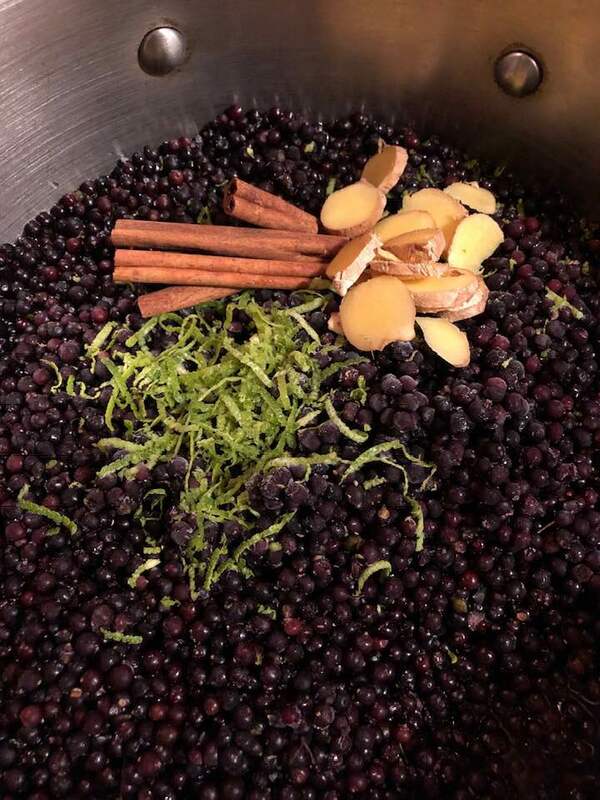 Frozen Elderberries, lime zest, cinnamon sticks, and water begin the process. Simple straining, measuring, pouring and stirring make the magic happen more. It's starts with the Elder seed (smile) and Great Grandma Nonna Costa always said, "It's all in how we stir it." Whisper in the healing prayers. Enjoy! May you be blessed with abundance from Elder in all the magical ways that the medicine comes when we're in need and when we can share the overflow. Much Love, Jen psst... and should you feel the call to get closer to Elder, have a peek at our plant diet planned for 2019. Lady's Mantle ~ Alchemilla vulgarisPretty sure I lack memories without Lady’s Mantle as it was among the gardens since before I could speak. It’s hard to describe the feeling too when you sit still near this one. Expansive. Subtle. Redirection. Steady. Persistent. Transformation. Change. Lady's Mantle is easily over looked and was far more popular in the past with an astounding lineage that’s walked with humans for a very long time. Science says it has ‘insignificant green flowers’. This always makes me chuckle. Corn, Nettles and Mugwort are in this group too! Need I say more about how these beauties are far from any embracing of being insignificant! More likely it means they are wind pollinated and so do not need showy flowers for attracting pollinators which is ‘better science language’, eh? Wind pollinated. Let's feel into this. The need to ride on the great winds of Earth in order to recreate. Mmmm.... Let's look deeper into the potent, humble, unassuming presence of Lady's Mantle. An Old Wound Care RemedyTraditionally Alchemilla was considered one of the very best wound healing herbs, even for infected wounds and cases of gangrene. We don't often see Lady's Mantle on plant lists for wound care today, but it's worth noting if you have it near already or plan to invite it close. Most likely the wound healing properties are due largely to its rich tannin content. Tannins give plants their astringent or binding qualities that when applied to the skin, make it a valuable remedy for healing skin abrasions. Astringency has an overall drying effect on tissue, drawing it together. Astringency can act also as a styptic too, which works to slow or stop bleeding and can also be beneficial for tissues that are lacking tone, such as in long term festering wound. Matthew Woods, in his book Healing Wise, speaks to healing ruptured ear drums that remain open by massaging tincture around the ear and taking internally. Please do not drip anything into the ear canal if the drum is ruptured. Matt also shares stories of healing hernias with Lady's Mantle infusions or tincture taken internally. I would consider rubbing the tincture over the hernia as well for the medicine moves through the skin to the membranes that need tone and tightening, thanks to these astringency qualities. Tightening and toning tissue integrity is part of the potency of Lady's Mantle as a medicine. I'd consider this for post surgical care as well where the body has been cut deeply and is in the process of healing this. A Female Reproductive System HerbLady’s Mantle has developed a reputation in current herbal repertories as a “women’s herb” For the purposes of this discussion I'll use the term “female” to refer to organs commonly known as the uterus, ovaries and breasts without assigning gender. Lady’s Mantle supports the well being in many conditions relating to female reproductive organs and issues. Lady’s Mantle is an ally for an array of menstrual conditions including stanching excessive menstrual flow (menorrhagia), irregular menstrual bleeding at times in between menstruation (metrorrhagia), excessive vaginal discharge like in yeast infections, vaginitis and other issues of discharge, for menstrual cramping when there is a dull achy pain caused by congestion, sometimes called a “boggy” quality to the uterus. Fibroids endometriosis, kidney, ovarian and breast cystic conditions Lady's Mantle is an emmenogogue (menstrual promoting) and is taken to promote a regular cyclic menstrual flow. This could be seen as counter intuitive due to its astringent actions. Lady’s Mantle, like many other plants, possess these miraculous regulatory abilities due to most likely a profound effect on the endocrine system where such things are organized. Lady's Mantle also has a reputation for easing menopausal symptoms like mood swings, hot flashes, and night sweats. Matthew Wood gives the constitutional indications, meaning the typical picture of the person needing Lady’s Mantle, as “the pale, anemic, sensitive woman with prominent blue veins and moist skin” as well as the indicators of “nervousness, agitation, insomnia and mood swings” During my time running with the midwives for home-birthing mothers, we found the tea of the leaves and flowers sipped throughout the weeks post-partum also assisted the uterus to regain its natural inherent tone. It's a specific herb when there are prolapsed of organs, like the uterus or bladder, post birth. In this case, I recommend both drinking the tea daily and preparing a sitz bath 1-2x/day a day with just Lady’s Mantle while drinking infusions of the leaf and flower too. There are times when a woman enters a period of disappointment around how her birth process unfolded. Lady’s Mantle not only helps us to heal emotionally from these disappointments, but also from trauma past or present, related to our “female” organs. Women have found emotional support from Lady’s Mantle after abortion, miscarriage and also for working through issues of sexual trauma. Many of these unresolved emotions move for a woman after giving birth. They move in search of healing due to the powerful creative forces that move through the pelvis and breasts as we birth our children, die to the old and birth ourselves to the new version who we are. These become self-healing opportunities for women and Lady's Mantle proves to be a gentle and potent ally for navigation that can be intense sometimes. Looking Closer for Your ApothecaryLady's Mantle is an easy to grow perennial making it a sustainable and invaluable herb to incorporate into our apothecaries and practices. The tea from the leaves is delicious. It has a rich taste with a delicious and very slight bitter flavor that I find many can quickly learn to love, if not instantly love, because their body knows this is needed. Harvest leaves and flower late morning and they are easy to dry through a dehydrator or hung in bundles, which I might add are incredibly gorgeous to have hanging around! Flowers bloom here, in the Northeast from June to July and if cut, a second bloom often occurs. Herbalists love 'bumper crops' for they make for tending an apothecary well. Lady's Mantle likes to be well watered, prefers fertile soil, thrives in partial shade to full sun, and is hardy in zones 5 to 9. Medicinal Parts: Leaf & Flower Medicinal Actions: Astringent, Mild Bitter, Stomachic, Vulnerary, Emmenogogue (brings on a bleed), Reproductive Tonic (especially for in between menses spotting), Renal System Tonic, Mild Diuretic Medicinal Preparations Include: dried for infusions and bathing, tinctures, infused vinegars and oxymels, and flower essence. Dosing Suggestions: 1 quart of infusion daily or 30-60 drops of tincture 3x/day is standard for more acute to long term dosing for months for the more physical conditions. Three drops of tincture 2x/day would be considered a homeopathic dose which proves to have profound effects as well, particularly when we are aware of the symptoms being rooted in our emotional, mental, and spiritual conditions of the more subtle bodies. Addressed here, physical healing can be rather quick but again is very personal and based on your journey through a condition where you would be seeking healing. Flower Essences can be taken for the same reasons as the low dose tincture. Bathing is simple by creating a yoni steam or sitz bath with a strong infusion or pouring 1-2 cups of infusion into the bath. One can float some leaves and flowers in the bath as well or add 3 drops of tincture or flower essence to your bath. The Dew Drops: Then there's sipping the dew drops as a magical essence straight from the leaves in the morning. Yes, an ancient practice where the essence of Lady's Mantle beads out at the tips of the leaves as water droplets and slides into the cup like structure of the leaves while mixing with the magical forces of the water in the air that has condensed onto the leaf's surface. This was and is an anointing holy water, a magical holy water for sipping and was gathered by medicine makers in ancient times and combined into physical medicines for healing. Try it. Spiritual Medicine - The AlchemistOur time here would fail to be complete for me if shied away from and ignored the spiritual qualities of this blessed beauty, Lady's Mantle.
So as we venture along our plants-as-healers path, we are often asked to revisit (or get newly acquainted) with one that jumps up and enchants. The alchemist within Lady’s Mantle has caught my heart, again. It has medicine in the form of support for the now of where we all are. Let’s listen deeper for the medicine of walking with and embracing change. Lady’s Mantle embodies elegance and strength. This low growing perennial plant has ruffled scalloped bluish green leaves that are finely toothed at the edges and covered with soft fine hairs and a slight waxy coating. It's flowering stalks, or racemes, at first glance appear like three dimensional lace bearing tiny star-like yellow green flowers. It can take part and full sun and grows well tucked near larger plants or as borders along stone. Here Lady's Mantle, at one foot tall, flanks Marshmallow at about eight feet tall. Never let size impress upon us a meaning of lacking potency or strength. This thinking has no footing in the plant world. Most notable, Lady's mantle has an exquisite ability to funnel and collect morning dew upon its leaves, which persists well into the day when all other dew has long since evaporated. The edges of the leaves show this beading up of transpired water from the internal waters of the plants tissue to mix with the moisture from the air that is settling upon the leaves and the shape of the leaf functions like a bowl or vessel to hold this transformed water. As stated, this substance is woven back in time to a long lineage of medicine making people who knew its potency and so gathered, sipped, anointed, and mixed it with remedies to be taken for healing. It is 'Holy Water' for me. This was gathered by alchemists of old and added to remedies as medicine. It's a personal choice for herbalists today. Lady's Mantel meets us where we are with a gentle guidance through nurture. It supports transformation or change but without any sort of push or nudge. More of a coaxing is my way of understanding the actions. There is a redirection of forces, energies, even fluids on the physical level, in order to support this. Support through the hang-over or cyclic replay of any sort of trauma is assured. Real change from the deeper levels is where Lady's Mantle works well. There is a balancing and enhancement of the Solar and Lunar aspects of our souls. Solar masculine-feminine relations and Lunar feminine-masculine relations along with how these relationships enter a larger dance with our Solar and Lunar cyclic nature. We go into deeper discussions with our Monthly Herbal Council dedicated to Lady's Mantle for 7/2018 if interested in further learning on how support is given with the medicine of Lady's Mantle. Send along questions if you have. Thank you for coming through, xo-Jen Wandering with Elecampane – Inula heleniumOur parallel lives with plants play out in so many ways. Each plant has a big handful of qualities where it can help for nourishment and healing. Then they have a small handful of qualities that really shine and help direct the medicine more deeply. And then, if we look with a more discerning eye, there are those 3-4 qualities where we know them to be true masters for healing. One could hope, as a human, that we do the same through our walk here and hone a few innate qualities that would be our soul gift to the world. Elecampane is a master of physical medicine for respiratory, skin, and gut support and as a soul and spirit medicine for seeking our way back home. For tapping into what is true for each of us. Abundant, yes, and maybe a little off the beaten path, come wander a little with me as we shine some love on this torch carrier for the soul. 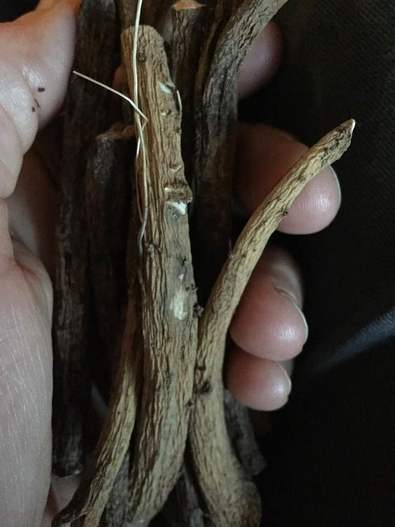 Medicinal Parts & Growth Habit: Root - dig in fall. Perennial Elecampane is the richest source of inulin. The amount of inulin varies according to the season, but is more abundant in the autumn which is why I also dig Burdock roots in the fall (biennial) versus 2nd year spring as it too has a good inulin component to it's roots. Inulin is a bulking agent, encourages growth of beneficial gut flora, tones mucosa linings, and helps with the dynamic and complex balancing of blood sugar through good communications between the GI tract, the blood, the pancreas, and the liver. Medicinal Actions: Diuretic, tonic, diaphoretic, expectorant, alterative, antiseptic, astringent, gently stimulant/blood mover. It was given by the ancients in phthisis (old word for pulmonary tuberculosis), in dropsy (old word for edema/swelling), and in many if not all skin disorders. So we think of the GI tract, lungs and throat, liver, and the skin for internal and external treatments, The name 'scabwort' arose from the fact that a decoction of it is said to cure sheep affected with the scab, and the name 'Horse-heal' was given from its virtues in curing the many skin diseases of horses. We can apply it similarly as humans for skin conditions as a wound wash or compress. Common Names: Scabwort. Elf Dock. Wild Sunflower. Horse-heal. Velvet Dock. Habitat and Description: It's found wild throughout continental Europe, temperate Asia as far as Southern Siberia and North-West India. As a cultivated plant for medicine, it's wandered to North America, where it's become thoroughly naturalized in the eastern United States. It now resides from Nova Scotia to Northern Carolina and maybe farther south, and westward as far as Missouri, growing abundantly in pastures and along roadsides, preferring wet, rocky ground at or near the base of eastern and southern slopes. Elecampane is one of our largest herbaceous plants. The leaves are tropical-like in size and number and sometimes reach three feet long arching out from the central stem that can reach 6-8 feet in height. The root harvest is generous and rather easy if you're skilled at using your body and a good spade fork. They take about three years to get fully established from seed. And they demand space! Sometimes it's hard to imagine in early spring but I continually find myself transplanting loved ones farther away so as to not get lost and shaded in such massive leaves. Chickweed and others that thrive in dappled sun and crawl out to the sun as needed love growing around the base of Elecampane. More on the Medicine of Elecampane RootExerpt from– M. Grieves Book: A Modern Herbal “In herbal medicine it is chiefly used for coughs, consumption and other pulmonary complaints, being a favorite domestic remedy for bronchitis. It has been employed for many years with good results in chest affections, for which it is a valuable medicine as it is in all chronic diseases of the lungs asthma and bronchitis. It gives relief to the respiratory difficulties and assists expectoration. Its principal employment as a separate remedy is in acute catarrhal affections, and in dyspepsia attended with relaxation and debility, given in small, warm and frequently repeated doses. It is, however, seldom given alone, but most frequently preferred in combination with other medicines of a similar nature. It is best given in the form of decoction, the dose being a small teaspoonful, three times a day.” -An extract from Elecampane demonstrated ulcer healing properties, relieving symptoms and improved gastric mucosal circulation in a clinical trial with 102 patients with peptic ulcer disease. Identifying the stress which causes such ulcers is more important work but Elecampane with help when combined with Marshmallow root and a adaptive nervine such as Tulsi. -Experiments with extracts of Elecampane in the laboratory showed it to have potent antibacterial activity against an array of infectious organisms. European scientists have shown that Elecampane contains a substance (alantolactone) that helps rid the body of intestinal parasites. Again this would be part of a treatment plan for such conditions. -The root was long ago candied and eaten as a sweetmeat or made into lozenges for sore, infected throats. It's often called upon for acute and long term treatment of whooping-cough, pneumonia, and chronic bronchitis. It's fast acting for acute conditions with more frequent doses but also helps chronic conditions with lower, long term dosing. Safety Concerns: Elecampane is generally a safe and well-tolerated herb so long as it's taken in moderation, especially for the young or elderly. Excess doses will likely cause significant gastric upset fairly quickly so it would be difficult to overdose on this herb. I love this built-in safety mechanism. If you feel nauseated, back up your dose to half and see how you feel. Resisting the 'more is better mentality' is wise here. Elecampane is not recommended to take during breastfeeding (the sesquiterpene lactones will pass into the milk and upset the baby's stomach - I repeat again if the dose is too high - read on). It's unlikely to be of any direct danger but it's still 'recommended to avoid it during pregnancy'. This being said, when I was pregnant and breast feeding I did take Elecampane in very low 3-5 drop doses three times a day if I was sick or baby was sick and needed this support. My milk provided the medicine in minute doses to my baby. I always suggest dosing for baby's comfort even if the medicine is for Mama. I'm sharing my experience here is all. Mouth Washes with Elecampane Root: Yes, I love this fresh root tincture added to a tincture blend for sensitive or infected gums and where lots of dental work is underway. It tones and tightens the gums and disinfects the mucosa while supporting rapid healing. The drawback here? Taste. It's pungent and I love it but many complain, unless they are threatened with loosing teeth! The priority list changes in this situation. Comfort is not always the priority when healing is asked for. So I formulate a gentle easy-tasting mouth rinse for general care and for children that can be added to water for swishing, to put into a water-pick, or applied straight on the gums if needed. I offer the Elecampane root addition when the condition and situation calls for a bit more. Dosing Suggestions: Fresh or dried root tincture can be taken in water 3-5 drops to 60 drops 3 times per day or every four hours for acute intense conditions. Decoctions of dried root are made by simmering 1 tablespoon of dried root in 1 1/2 cups water for 20 minutes. Keep covered and allow to cool another 20 minutes and drink 2 tablespoons to 1/4 cup (4 tablespoons) every four hours for acute situations. It's deliciously strong but an acquired taste for some. Learn to at least like it is what i would say next. I don't bother with pills or capsules. Consider the lower dosing for chronic long term conditions and for those of you that know your system needs less medicine to respond. Being more sensitive is a strength and it's also economical. We need less medicine. The Spirit and Soul Medicine of Elecampane I LOVE this plant like a deeply trusted friend that just might know me better. As always the knowings between us are unfolding with time and these things will not be rushed. Slow cooked is the way with the plants and the souls of humans. I add my two cents here from this long walk that started when I was in my mid twenties and continues with me damn near close to my mid 50s. Phew. It really does happen if we're lucky and maybe a little cleaver! Plant dieting on Elecampane is in the plans for a future group experience and I do look forward to what Elecampane will reveal to us in such a setting. Elecampane will inform me as to when, where and how. This I trust. I'm sure there will be some juicy things to chew on as we step closer for a listen in shared space. Stay tuned... hands to heart here. So what I know of Elecampane so far as a soul medicine it that it works like the torch of the Hermit in the tarot, heralding a way to see through the mist in a time where discerning can be challenging. There's an anchoring to the indigenous soul that is always wanting to rise and express itself in these times. Maybe we shy away from this? Some do and it's fine. But once aware of this, we can call on Elecampane to anchor and support flow from this soul space that carries a healing we long for and also thrive within. So 'finding and seeking home' is the key phrase Elecampane gave to me long ago about how to do this. To be this. To find a way no matter what. And to also find comfort, acceptance and healing in finding this place within us that is always present and available. Elecampane stands at the portal shining this light for us. Suggested 'Dosing' to Work with Elecampane Spirit and Soul Medicine:
Excerpt from Felter & Lloyd's Kings Dispensatory from 1898 “Elecampane is an aromatic stimulant and tonic, and is much used in chronic pulmonary affections and weakness of the digestive organs. Night-sweats are relieved by Inula, as are some cases of humid asthma, and, by its tonic properties, it tends to sustain the strength of the patient in chronic disorders of the respiratory tract. Inula is somewhat slow in action, and should be used for quite a time to get its full action. That it is an important remedy in irritation of the trachea and bronchia is now well established. It is adapted to cases with free and abundant expectoration, teasing cough, and pain beneath the sternum, conditions frequent in the grippe (old fashioned term for the flu), and the severer forms of colds.” "grippe" ... "severer"... Just love the old writings! Elecampane Cough SyrupYou can make this in less than one hour. INGREDIENTS:
DIRECTIONS:
Hint Hint: YES! This syrup can be made with just Elecampane root as a spirit medicine for dosing over time. Seek your medicine. Walking with you, Jen Use Discount Code: ELECAMPANE15 for a 15% discount on 'Birthing and Herbalist in 13 Moons on-line Course for the Summer of 2018. Good through 8/31/2018 Enjoy! Jen An Unexpected Gift From Grief & DeathGrief work happens. It needs to and it's not about comfort, at first. We're beekeepers now through deep love and desire, through honoring the harsh conditions bee are seeking to survive in, through being gifted bees unexpectedly while helping a friend through death and grief, through knowing that receiving such a gift means stepping up in way we haven't before, and through tending in a way that will include death and grief. No life exists without this. We lost two hives this year, alive in February, that died during the long and cold March of this year of 2018. To make it that long and die happens. I walked wide around these hives for several weeks before stepping in closer, knowing full well death had come. It was silent. It felt silent too. No, I'm new to death but each time we dance uniquely with each other and I watch myself closely as I learn more about death, grief, and myself. I finally scooped dead carcasses up bare handed for honoring on our communal grief altar. It’s bigger than these little hives for bees. And it's bigger for me or my little life too. Many bees come from southern farms and can struggle with these harsh NY winters and we help them get through. We weren't going to get southern bees again and so had shelved the whole thing as we each grieved this death in our little tribe here. Accepting and working this perceived lose is good medicine for us. Bees change your property. They do this fast too. And it's incredibly apparent when they leave too. You just feel it. Within the very same day of placing these dead bees on the altar and facing the feelings of it all, a call came in near sunset. We received a connection thru our friend to a local young man who quietly and steadily loves the bees and has bees to share that made it through this hard winter. Considered a hardy community of bees that know the NY cold well with a seasoned more than 20 years bee keeper too, it was one of those serendipitous big blessings really to find each other and for us to try again. I have my thoughts on how it's larger than that too when life jumps up again. The new hives are thriving and very different. Death and grief in flow has taught us to walk differently and it may just be part of the purpose of it all. So we're excited and busy preparing, again, to receive. This means cleaning the hives. And they were so full of honey, beeswax, and propolis. Nope, we didn't plan on such bounty for we had our course set on success which meant these gorgeous bee products from all their hard work would be theirs, not ours. We hoped for a little extra only with them thriving among all the gardens we already have here. And we hoped in a year or two as well. I watched myself closely as I learned how to harvest this bounty. In the wake of death we move differently. And it's so astoundingly unique each time which amazes me still. What bubbled up for me? Humor at how clumsy I am in this equation for I've never done this and have no idea what I'm doing harvesting honey. What a delicious mess! There's the bittersweet, the reverence, the acceptance, the honoring, a deeper commitment to lean in and listen more closely to them as we walk together through hard times. Yeah, let's lighten this up now because we can laugh and rejoice in the wake of death and grief too. What I was most unfamiliar with and most excited about was getting to know propolis better. Until now I've shied away from this as medicine in hopes of helping them survive by reducing demand for their products. I laugh at myself because there is a surplus of this from them thriving with humans. Honey companies would never exist if they received propolis through the way I did here. It comes from finding a way to thrive with them too. As we switch out frames with other hives and negotiate for their needs first which includes scraping hives and frames of propolis just so the parts will fit back together, we receive this amazing substance. Now let's talk about what propolis is, how to make this medicine yourself, plus the circumstances where it thrives in support of healing. Making Medicine with Raw Bee PropolisSo first what is bee propolis? It’s a resinous substance that bees gather from trees and flowers. Just like honey, propolis varies from hive to hive. It’s used for many things inside the hive, including patching holes and air leaks so they can regulate temperature and air flow while keeping opportunistic ones out. Propolis inhibits bacterial and fungal growth, and prevents putrefaction when large intruders crawl into the hive and die. once brood/baby bees are hatched, they line these cells with propolis to sterilize them for receiving honey or packing with pollen, their food and medicine. This is how wax gets the different hues as it gets used over time. The broad make-up of propolis is “primarily resins and vegetable balsams (50%), waxes (30%), essential oils (10%), and pollen (5%)”, with a thank you to our scientists for analyzing propolis for us. Bee propolis at room temp is sort of sticky and can be pressed together like this ball my friend gifted me. You can pull it apart with your fingers too into small chunks. For tincture making I break into small pieces, freeze these chunks for a few hours and then powder it in a standard dedicated to herbs coffee grinder. (pics below) This prevents you from getting a sticky impossible-to-work-with goo from the generated heat in the grinder. Being powdered increases the surface area exposed to the alcohol for easier more efficient, waste nothing, get all the medicine kind of tincturing I love. Steps To You Making a Great Propolis Tincture
A Few Notes:
Now What? How do we support healing with this?I'm doing my best to distill it here or there's a threat of falling into a dissertation abyss! My focus is not to comb the scientific research for you. Other herbalist data collectors do this. I already know and trust what is now being 'proven' so my focus is on testimonials and experience I've witnessed among my tribe, herbal friends, and now being among bee keepers. This not complete but good enough for you get the idea on how potent and versatile Propolis is. Health Benefits Of Propolis: 1. Propolis Kills Bacteria, Mold, and Viruses: This is one of the reasons the bees make it and it's part of their apothecary in the hive. They are astounding herbalists and combine, mix, and transform plant parts into medicine to keep themselves strong and well. Consider internal treatment during any active infection, cold, flu, or mysterious malaise while you seek answers to why. Propolis has a long, long traditional story upon story of treatment among people for treating colds, flus, and infection anywhere in and on the body. Works great as a throat spray too for sore throats when tincture is mixed with honey. 2. Propolis Protects Injured and Decaying Teeth: Traumatic injuries and decay to the teeth present challenging situations for the clinician because of pre and post-treatment complications that include excessive inflammation. Propolis is potent for anti-bacterial and anti-inflammatory capabilities in the mouth, and especially with regard to needing root canals. You'll see it in well-made tooth pastes. I add the tincture to my water-pic water on occasion. With any dental trouble, I'd increase to 1-2x daily. I often recommend pre and post dental visit treatment due to all the scrapping and prodding can bust bacteria deep below the gum line and cause issue. Sea salt and water gargles help too. 3. Propolis Helps Lowers Blood Pressure - Honey too in small daily doses: Okay so I did a little research and got disturbed by the rat studies, again. I hear both sides and I am a trained scientist but we have historical information so I'm not one for animal studies at all. Anyway, this holds a bit of interest for me. Nitric oxide is a very important substance for healthy hearts. The inner lining of our blood vessels use nitric oxide to signal the surrounding smooth muscles to relax, thus resulting in vasodilation (the widening of blood vessels) and increased blood flow. Reduction in the bioavailability of nitric oxide plays a significant role in the development of high blood pressure. And without it, you’d have a heart attack. There is an enzyme called Tyrosine hydroxylase (or TH for short) that limits that amount of nitric oxide you can produce. Propolis has TH and so helps provide the enzyme for regulating our nitric oxide levels. If you struggle with hypertension, you may want to consider taking raw honey, which contains propolis, as it has been proven to lower blood pressure. Consider two tablespoons per day. Or take doses of propolis tincture 30-60 drops per day. Please refrain from thinking you can replace your BP medications today with either of these. A weaning trial would be a better experiment, along with other changes in lifestyle, additions of other herbal remedies, spiritual work and support, creative pursuits, and dietary considerations. Being safe is the goal. No one walks to hypertension overnight, or from it either. 4. Propolis Helps Treat Some Bone Diseases: It's in the inflammatory process that we loose bone density over time. Inflammation is a healing response within the body. Inflammation is needed sometimes to begin the healing process. Gone unchecked or never reigned in so the body can never truly rest and recover nudges us into a chronic inflammatory state of being. This feeds all disease. Period. I feel we're in a chronic inflammatory state as a whole culturally, and even at large for humanity. But we don't have to walk in this state all the time within our bodies, or outside our bodies either. If you’re working with bone density loss taking a daily dose of propolis could be a very wise thing to consider, along with exercise, good sleep, dietary support, and... and.. and... you get my drift here. It's not just "take propolis" and carry on as you are. People recovering from critical illness requiring ICU hospitalization would do well to take propolis for at least 6 months after such an event. The bone loss in just two weeks in bed is astounding and measurable. Some loose 30% of their jaw bone in this time due to the mouth has so many opportunistic bacteria. Consider propolis for recovery. 5. Propolis Helps Treat Pollen Allergies An amazing health benefit of propolis is its ability to calm the symptoms of seasonal allergies. Scientists gave propolis to rats for two weeks and found that it significantly inhibited histamine release from the rats’ mast cells. Histamine is the compound that makes you sneeze, gives you watery eyes and a runny nose – generally making your life more difficult. Anti-histamines are the main allergy drugs sold over the counter. Their results clearly demonstrated that propolis "may be effective" (we all have to say it this way for now) in the relief of symptoms of allergic rhinitis through inhibition of histamine release. So come allergy season, don’t only take your bee pollen but add a daily dose of propolis tincture 30 drops/day. 6. Cancer Cells in the Presence of Propolis: Research continues. Prostate cancer cells become suppressed (at least in a test tube) in the presence of propolis. Colon cancer cells too. Scientists are finding that it causes the cancer cells to die by necrosis, which means that it interrupted the blood supply to the cell. This causes just the local cancer cells to die and NOT the healthy living cells. Chemotherapy does the opposite of this – it kills both healthy living cells and the cancer cells and is the reason why chemo often has some violent and devastating side effects. We have choices. Ultimately, this research is very promising. My suggestion to this is more complex than take propolis, but this will help if you get to know your local bee keeper who cares for the bees and their needs first, and support their work as you get to know and understand bee products that are ecologically harvested as best as possible. 7. Propolis and The Gut: Research is underway and scientists have found that propolis inhibited the growth of Campylobacter jejuni, Enterobacter faecalis, and Staphylococcus aureus, the three germs that are commonly found in food poisoning cases. They went on to say that propolis preparations "could be used as support to traditional therapy for infection, especially when antibiotics show no activity against these micro-organisms." And so we thankfully see more bridging happening between modern medicine and ancient practices. In my house and my practice I am always suggesting honey water, 1 teaspoon in a warm cup of water sipped slowly, for stomach flus and GI disturbances with vomiting and/or diarrhea. The propolis is added if it doesn't resolve in 24 hours. Rarely do we need the propolis but I keep it close just in case. 8. Adapting to Stress & Propolis: One of the reasons the health benefits of propolis are so vast is because it is so full of antioxidants. An active ingredient in propolis known as caffeic acid phenethyl ester, or CAPE, triggers a broad spectrum of biological activities including antioxidant, anti-inflammatory and antiviral actions. So let's look at once kind of stress. Heat stress is considered to be the main factor underlying the early fatigue and dehydration seen during prolonged exercise in the heat. Researchers examined blood from 30 competitive cyclists who engaged in endurance training for two to four years prior to the investigation. The lead researcher stated at the conclusion of the study that CAPE, one of the powerful compounds in propolis, just might promote rapid recovery from such a stress. Knowing this I travel with propolis. Travel is a stress and one small bottle travels easy and addresses many issues while on the road, one being rapid recovery from stress. I like to take this intuitively while on the road, meaning I check-in with my body as I head to sleep and consider it then. 9. Propolis is Part of an Effective Treatment for Warts: While this viral stimulated states happens often with children, it can happen at anytime in life. I take propolis internally 3-15 drops daily while dropping the tincture right on the warts. If plantar warts happen on the bottom of the feet or warts in other odd places, band-aid or tape a small piece of saturated cotton ball to it. I've seen successful treatment of many warts with internal immune support, apple cider vinegar soaks, beach trips (seriously, all warts among our tribe have shrunk to 1/2 in less than a week with ocean swimming), and topical applications of propolis ( taken internally daily too). Thank you for traveling this far. Here's a simple thing you can do for the bees that they'll so appreciate for they travel miles a day to harvest. Lay out a shallow bowl that's pie plate shaped with marbles or stones in it and fill with fresh water each day for them. They drown easy which is why they need the stones to walk on. Plant flowers for them. Find a good bee keeper who loves them and cares from that place. And if you need some ElderMoon Propolis? We thank you for delegating to us to provide medicine for you and your family. Our stock ebbs and flows depending on the year. Much Love, Jen Welcome Herbalist - Herbalist In The Works - Plant Lover - Fierce Beauty Walker Anyway in an Intense World that Calls To and Needs Us... This month in our Monthly Herbal Council at EMS of Herbs, we'll sit together to peek deeper into the practice of 'Plant Dieting', also called 'Sacred Plant Initiations'. Deepening our practice in relationship with the plants and Earth by drawing wisdom from ancient tools such as 'Plant Dieting' is the goal. These coined phrases encompass the paradoxical simple and profound act of working with or dedicating one's practice to one plant deeply by ingesting only that one plant for period of time. Consider 12 hours to 4 days as the window of time often considered. We'll explore in council the why's and how's of this practice and how it embodies a feminine form of a 'Questing' in it's deepest expression based on how we prepare and move through it as a practice to deepen consciousness. Dedicated nourishment is woven into the practice here versus intense deprivation. So we'll speak to the elements of a 'Quest' through connecting, preparing, and retreating for self healing and growth. Preparation is everything (wink wink) meaning you get out of it what you put into it. It's all connected to how we show up. And yes, 'dieting' means we ingest small amounts of just that one plant for a predetermined amount of time while engaging our supportive consciousness shifting tools. My desire is for this to be informative and inspiring to deepening your practice of walking strong with the plants and to raise awareness around this ancient way that indigenous cultures put into practice as part of their sacred tending to life. It's worded as 'fasting on one plant'. It can be that, but it's so much more. The Why? As an herbalist, or plant lover who turns to plants for healing support where possible, (the same thing), our work with the plants as medicine requires a dedication practice and creative fire to be tended regularly within us. Plant Initiations ~ Plant Dieting can be that bit of lighter fuel to make this fire within jump up for us. While it may not be for everyone in this moment, I do believe eventually it is for all plant lovers seeking deeper connections and relationships with the plants and Earth. (Jen's take. Leave it at the door if it doesn't feel true for you.) Plus, the benefits of fasting are beautifully researched and gaining awareness and practice for healing all levels of our being. Yes, ancient practices consider spiritual are now proving to heal the physical. Imagine that! Consider these as some of the reasons why you might consider embarking on plant dieting. Add your voice to this:
The How? As stated, preparation is the key. There can be a longer, steady preparatory movement into retreat and return. There can also be a more narrow window with a deep drop and return. Either way can be an incredibly informative experiential ride into unknown terrain where developing our unique skills will be called into action. You know you. Being guided by a space holder seasoned in Plant Initiations is available and resources will be shared for this. But there are those who know this a solo journey and trust their skill set to begin on their own. We'll speak to the creation of this as well. The What? What is plant dieting actually? To give the simplest explanation we partner with one plant that calls to us. It begins with the 'yes' in your heart. We then prepare. This includes exploring intentions for healing. Consider one circumstance you know you are seeking support with. Another way is to come to this from a place of deep trust that what comes up is what is needed. An elixir or syrup is curated from this one plant you're called to and made in a sacred way. It can include and combination of honey, liquor, tinctures, vinegars, juices, infusions, decoctions, flower essences and even edible honey pastes. A little math to calculate how much you will need based on how long you plan to diet needs to be done (we'll cover this). Space and time are consulted, altars and sacred space worked, journey, meditation, artistic expression, song and sound, writing, dreaming, bathing, limpias, pilgrimages to sacred places, and much more can be woven in. It can be a community experience (I've been with 25 people sometimes). It can be created with a partner, a sister circle, or on your own. The rules are loose in these many choices meaning the alchemist within rules here in weaving a ceremonial plant diet that supports you. The Apprehensions? Yes, they come up. Considering all the choices above, and there are more, one can get overwhelmed and easily think 'I can't' but I will ask you to hold that in your right hand and set it down over there, by the side of the road. Thank you for considering coming to infuse with something new and different, or considering a new way to this, if you're already a seasoned plant dieter. Then there's the idea of no food for a period of time. No coffee or tea. No Sugar. Yes, plenty of water and a supportive infusion can be taken in freely. What comes up when you close your eyes and feel into this? Mmmmm.... there's good medicine there. Light fare for those who medically cannot fast are often provided or outlined. This would be a good place to start to ease the apprehension of those who have never fasted before. It's like working a new muscle. It takes time. Cautions? You bet with stronger herbs or poisonous plants but there are ways to work these beauties. We'll speak to this too. Saying 'No' is completely fine. Remember, you know you best. As you feel into this idea of embarking on a plant dieting experience consider journaling to get behind the "no" and see if there's some medicine there for you sequestered in the shadow. How does your body feel and how can you partner with this from a place of just honestly looking for a place of loving self versus judging self. Maybe there's no more to the discussion. Maybe there is. Only you know you here. I also consider stepping behind the 'Yes' too for mining the medicine we are seeking in saying yes. If you're sitting with curious intrigue laced with a little nervousness, this is a 'yes' for me. What say you? I would love to see you in Council. These Monthly Herbal Councils are intimate, informal, easy talks with a 'small commitment and big return' kind of investment in growth. Yes, 60-90 minutes of monthly 'plant talk' with like minded ones. This Friday, 11am EST 5/4/2018. Always recorded and archived for later viewing for you. Enjoy! Much Love, Jen Some Resources: Join us in council here: The Monthly Herbal Councils are free if you're enrolled in other courses at ElderMoon School of Herbs |
Details
Jennifer Costa, Herbalist-RN, Teacher, Botanist BS, EM-CST, and Founder of ElderMoon School of Herbs & Earth MedicineCategories
All
Archives
January 2023
|
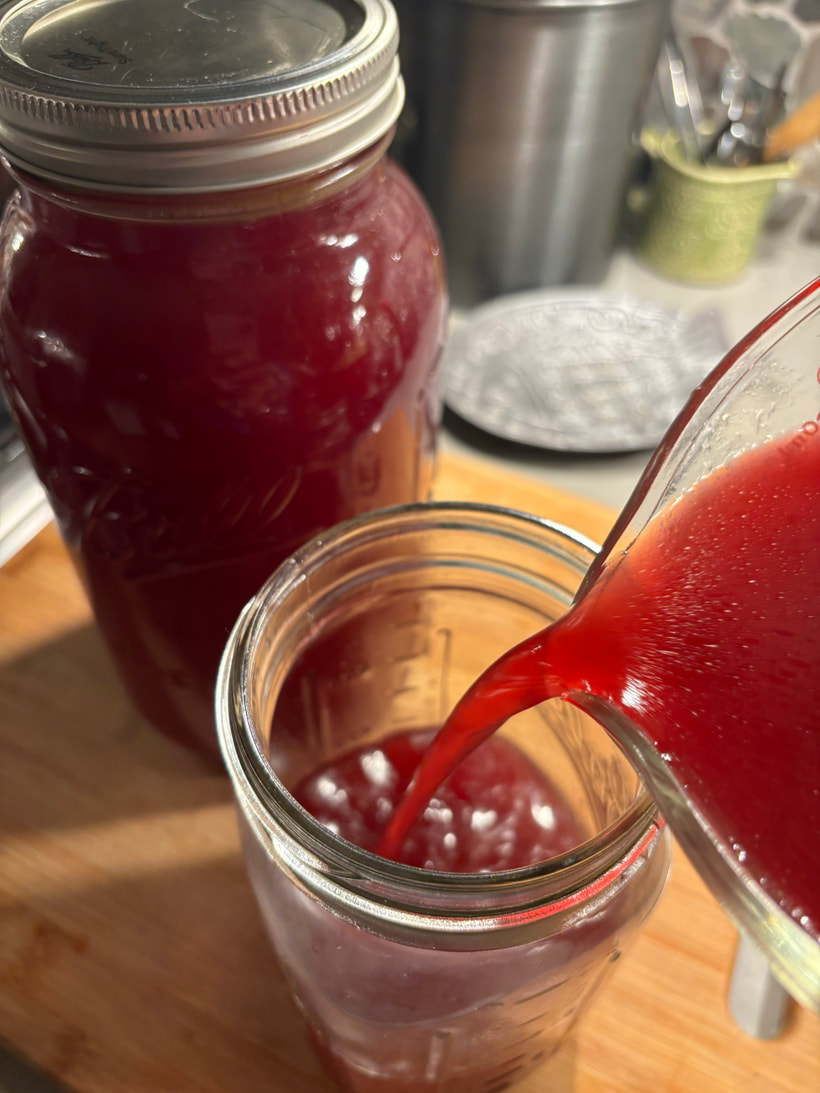
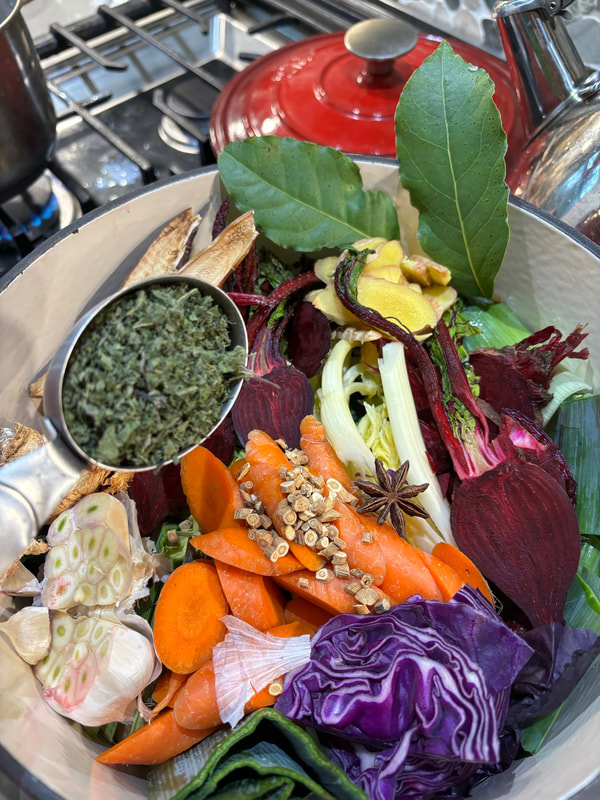
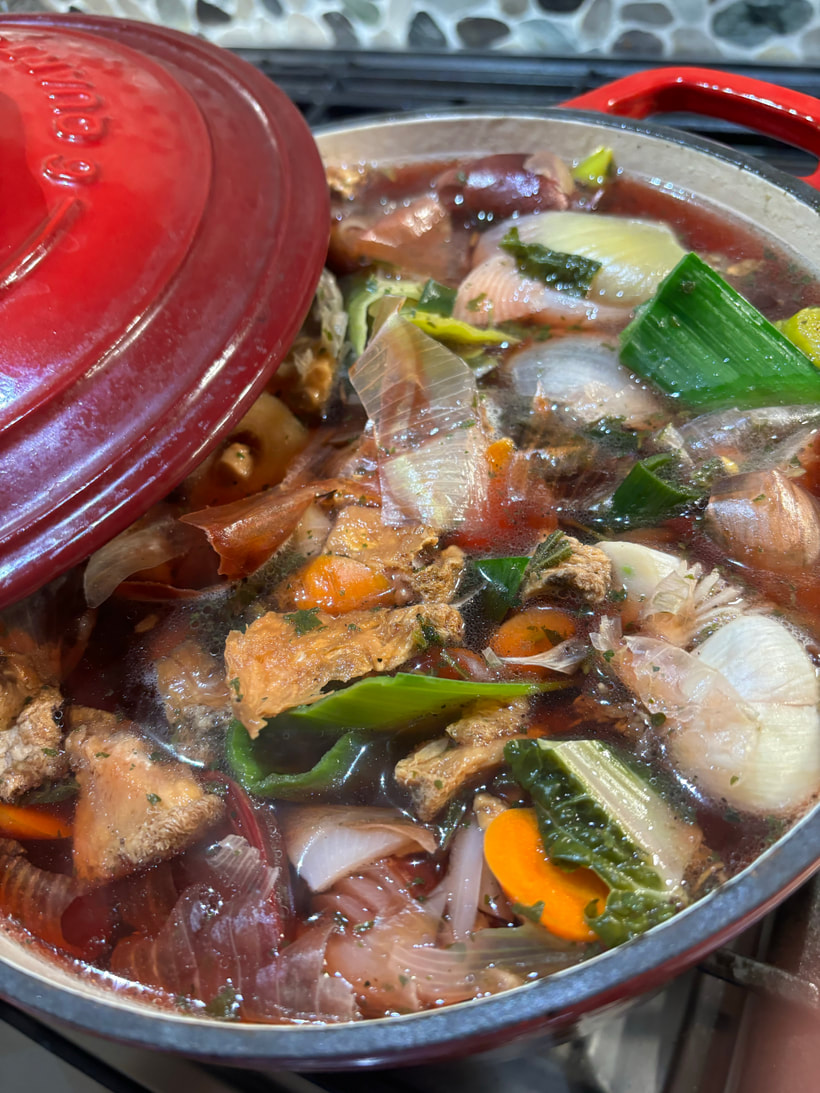
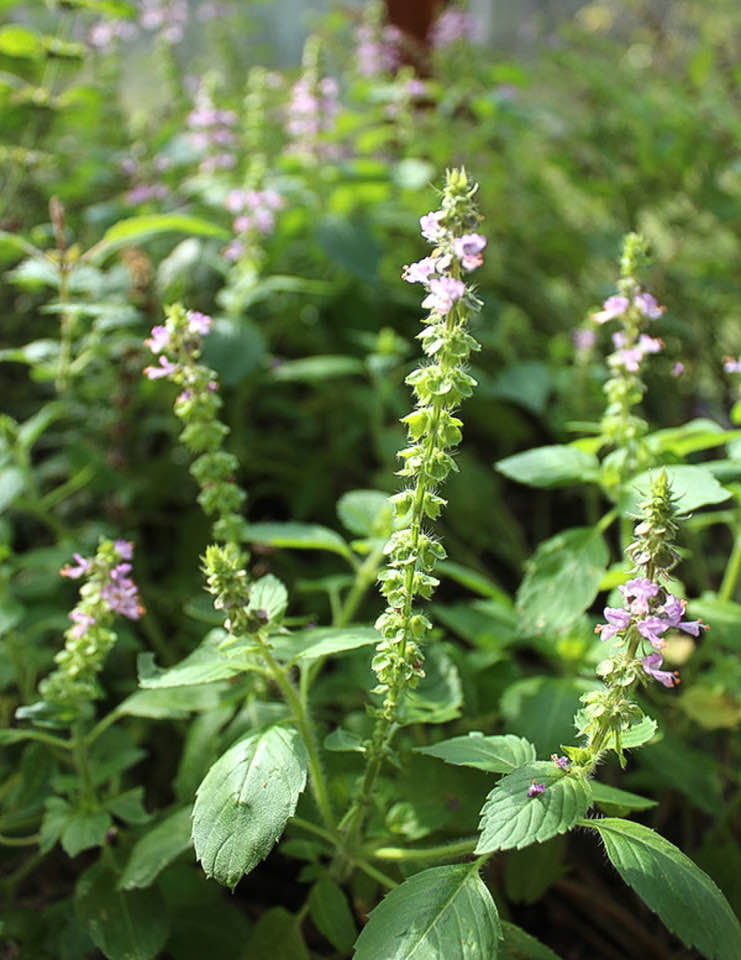
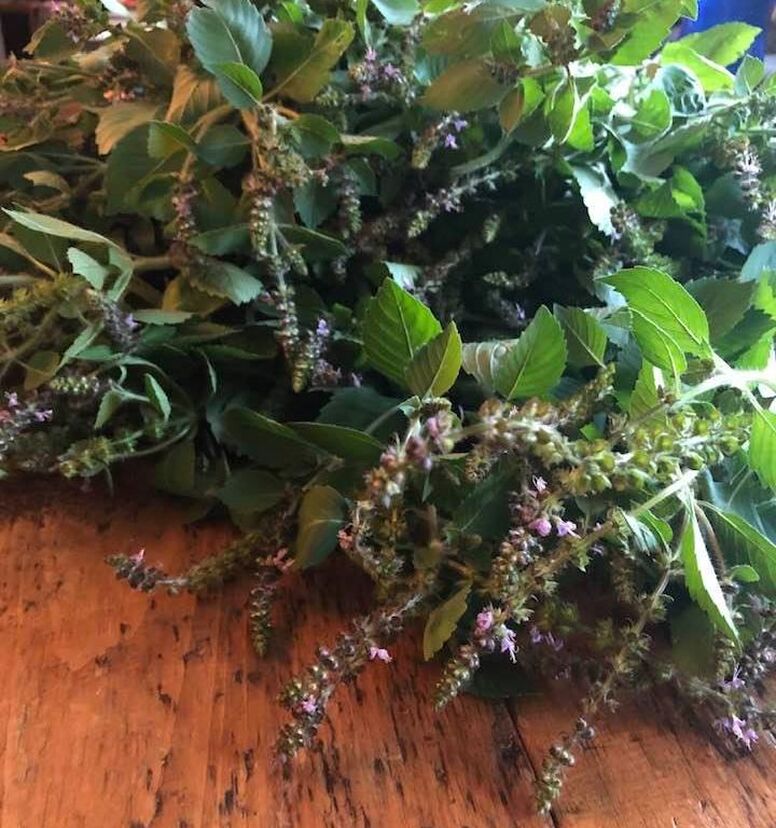

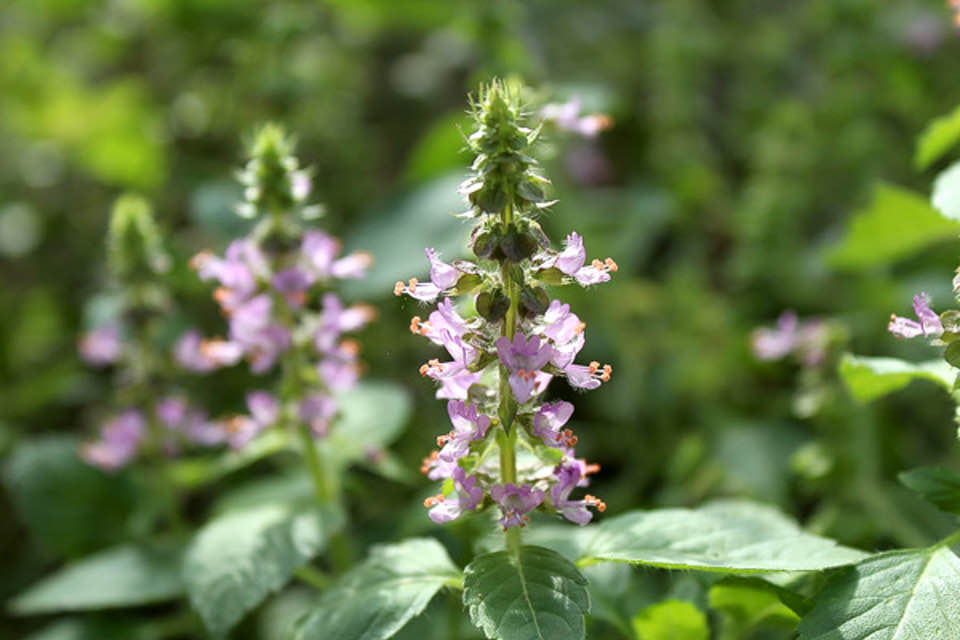
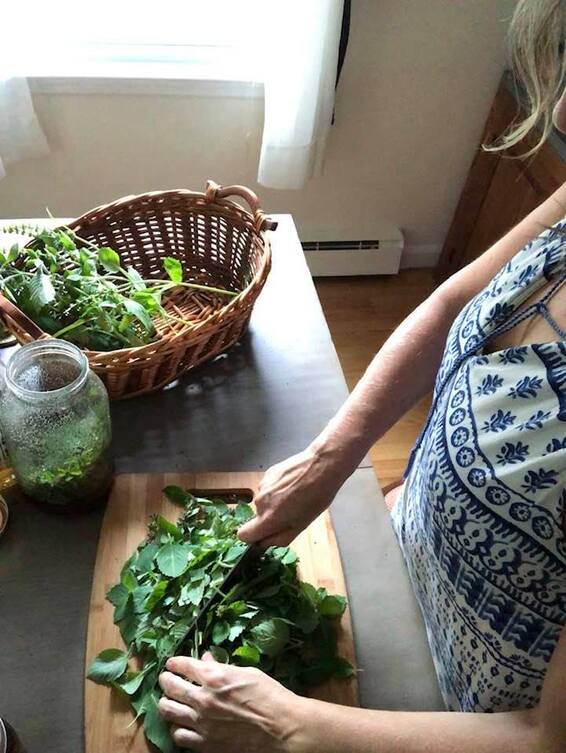
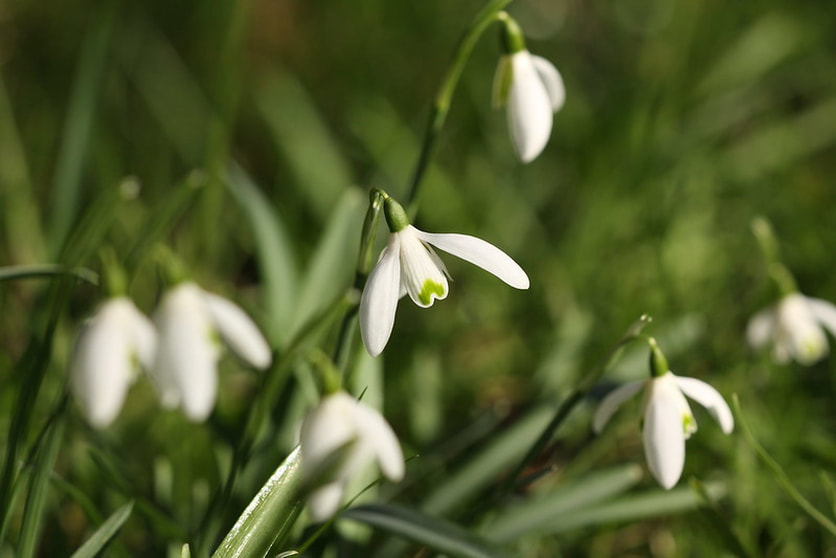



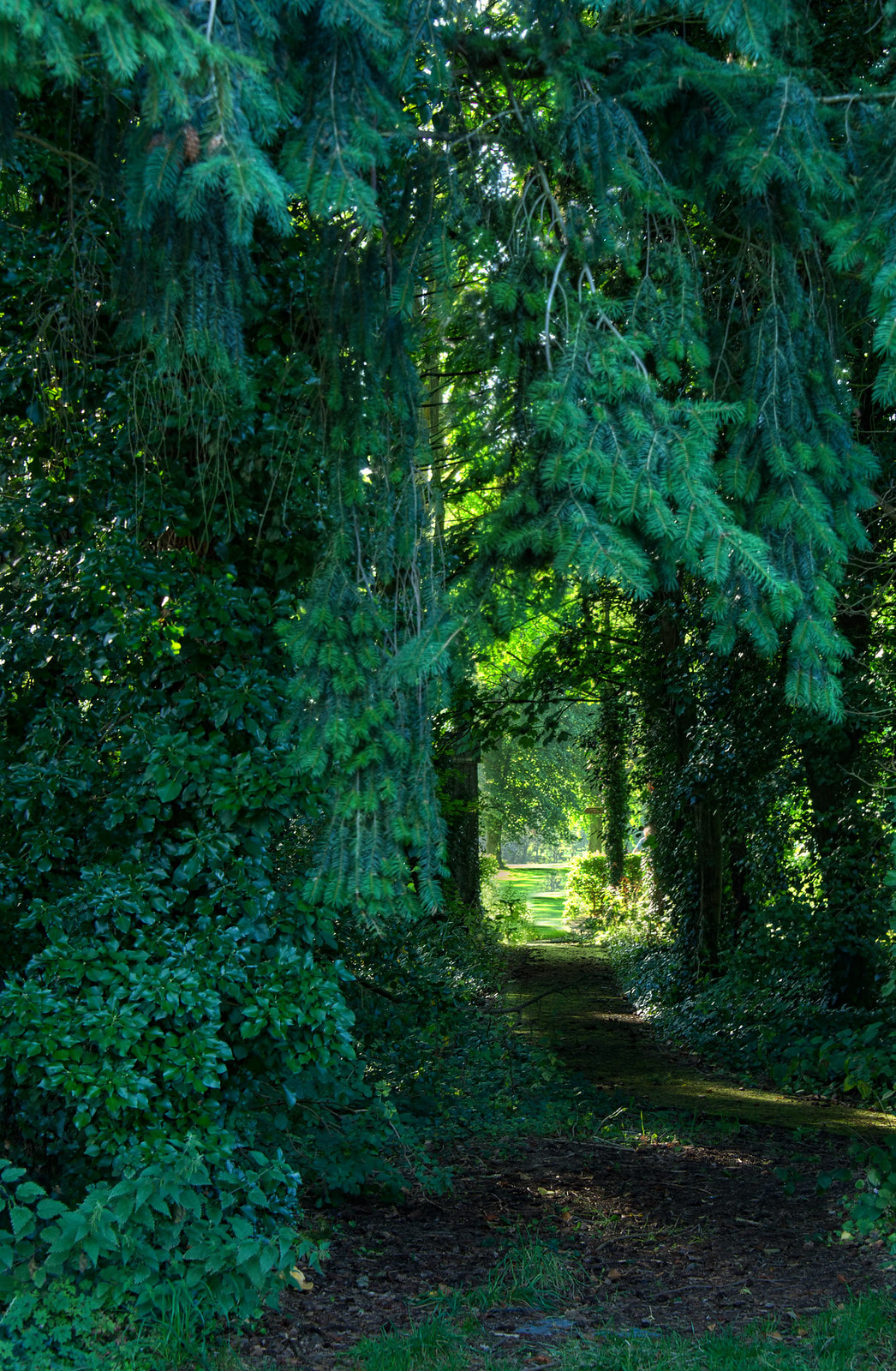
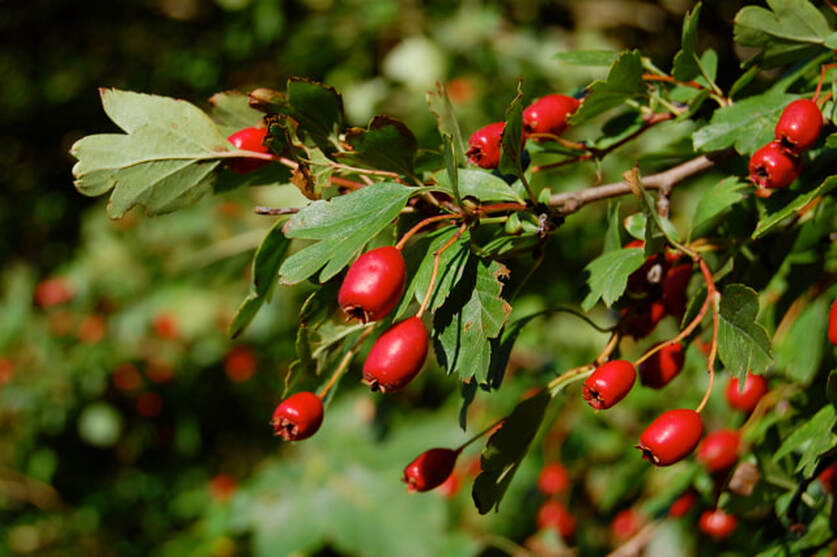
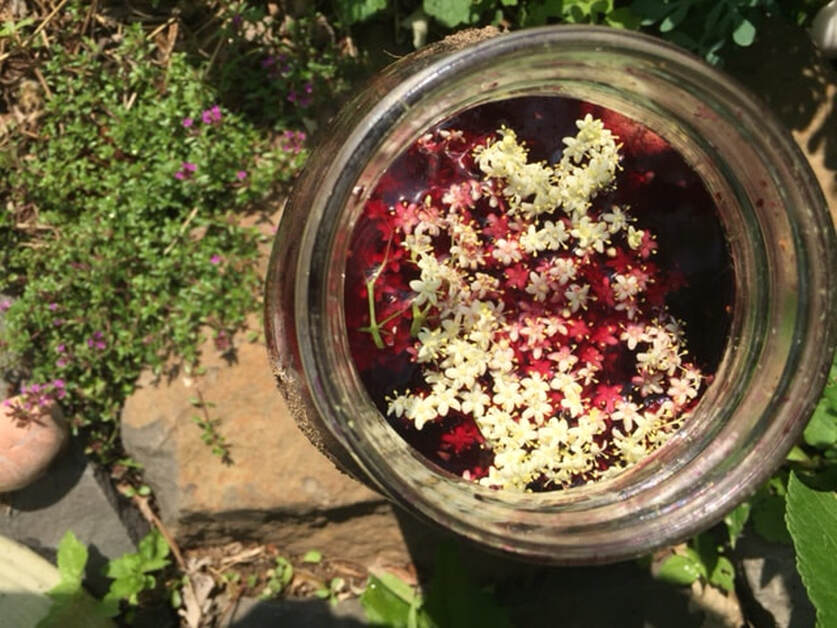
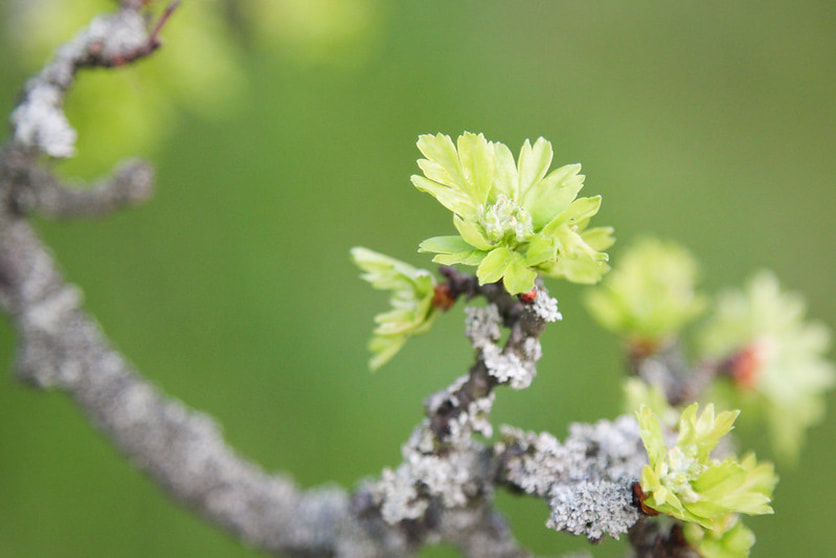
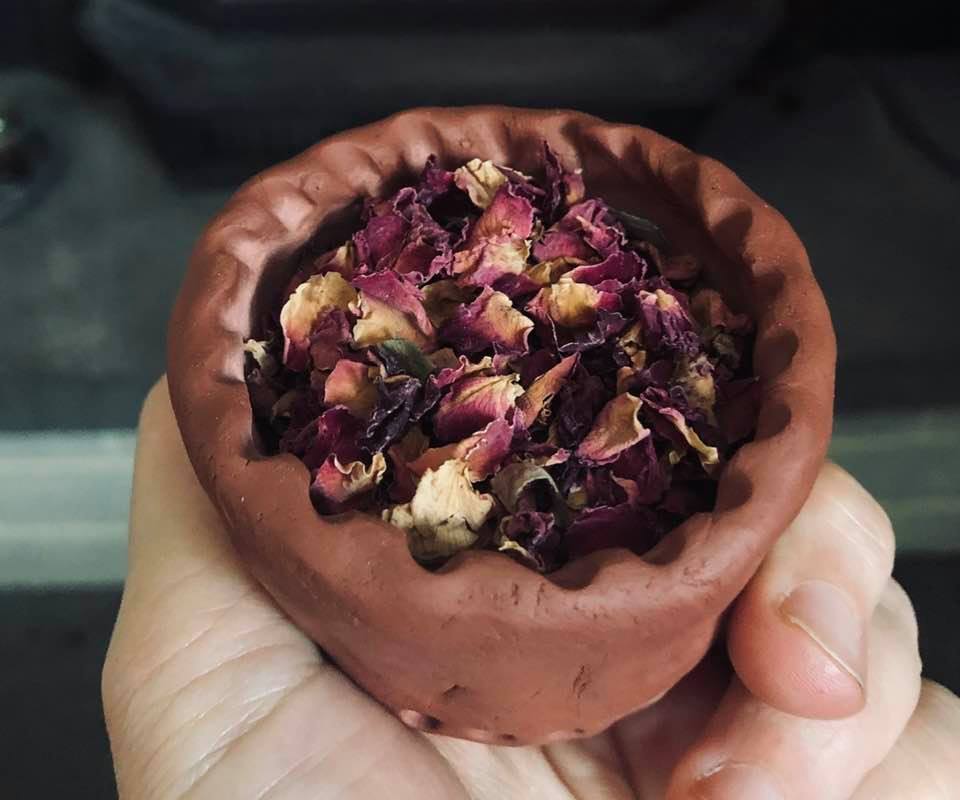

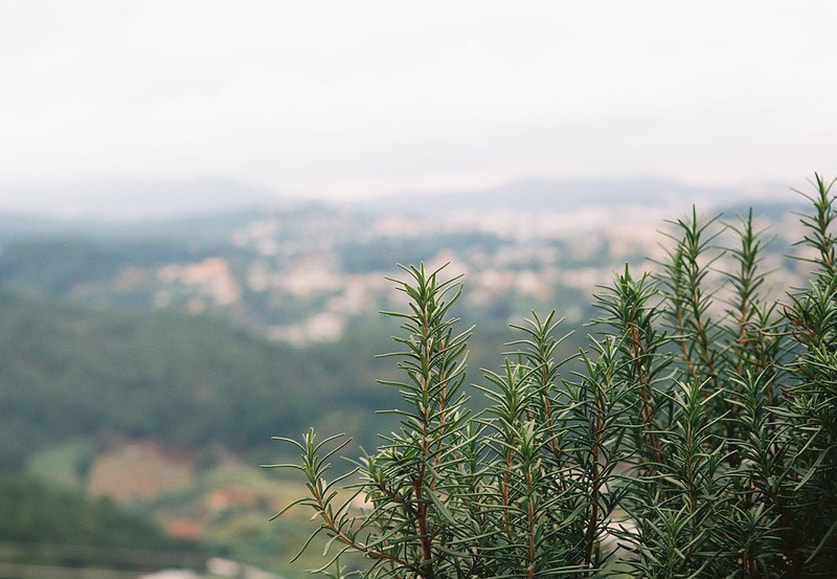
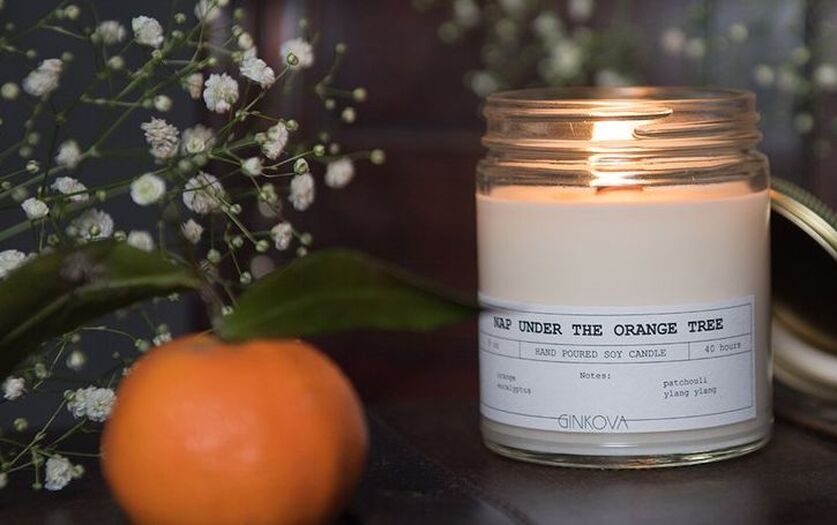
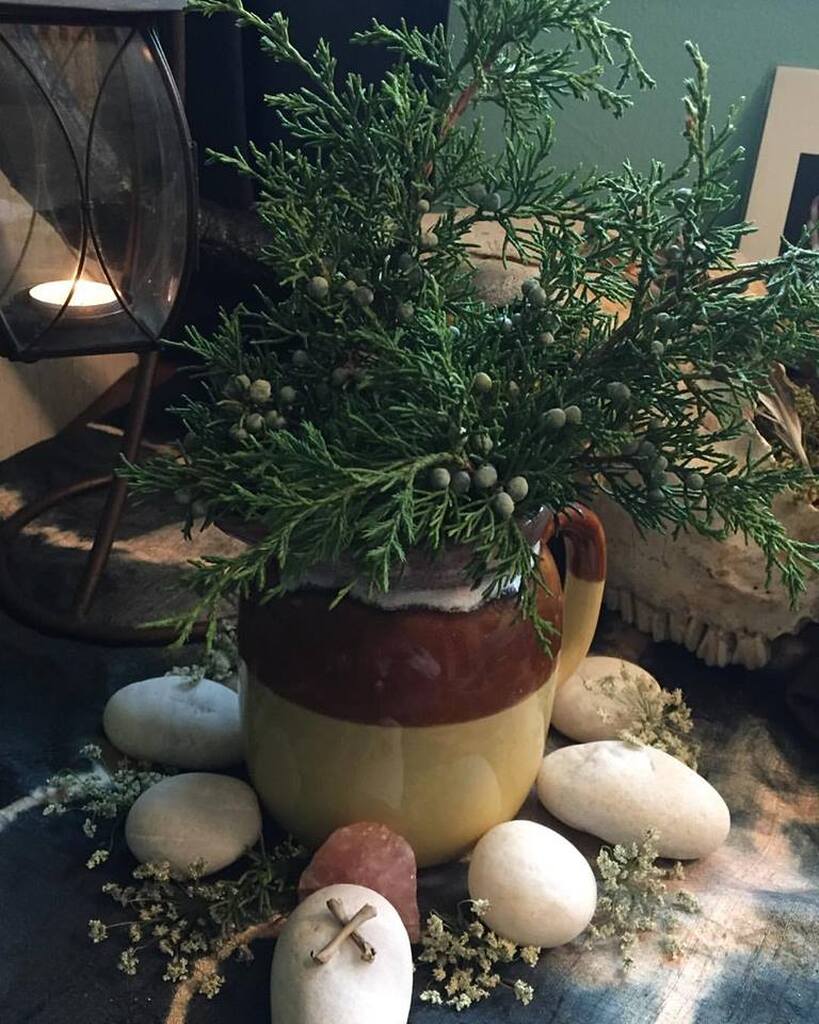
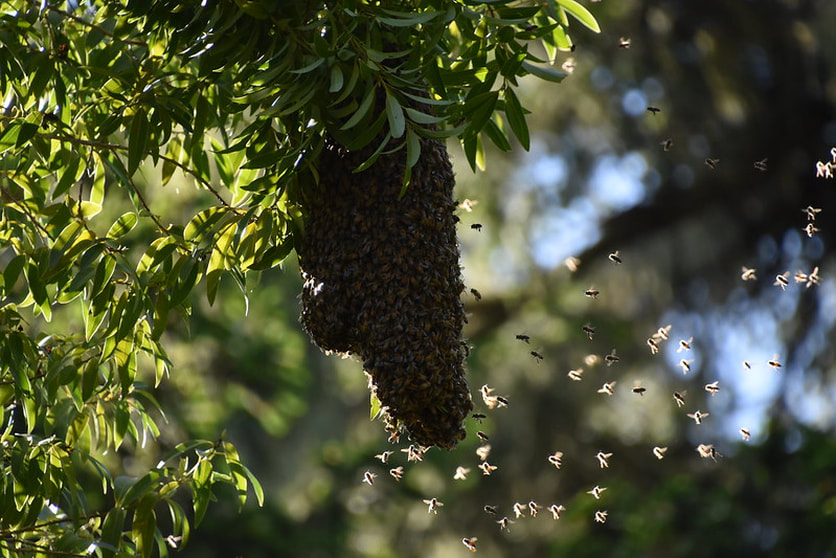
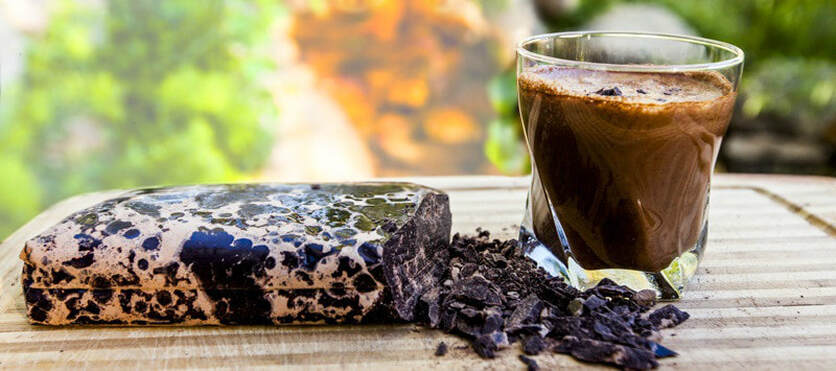
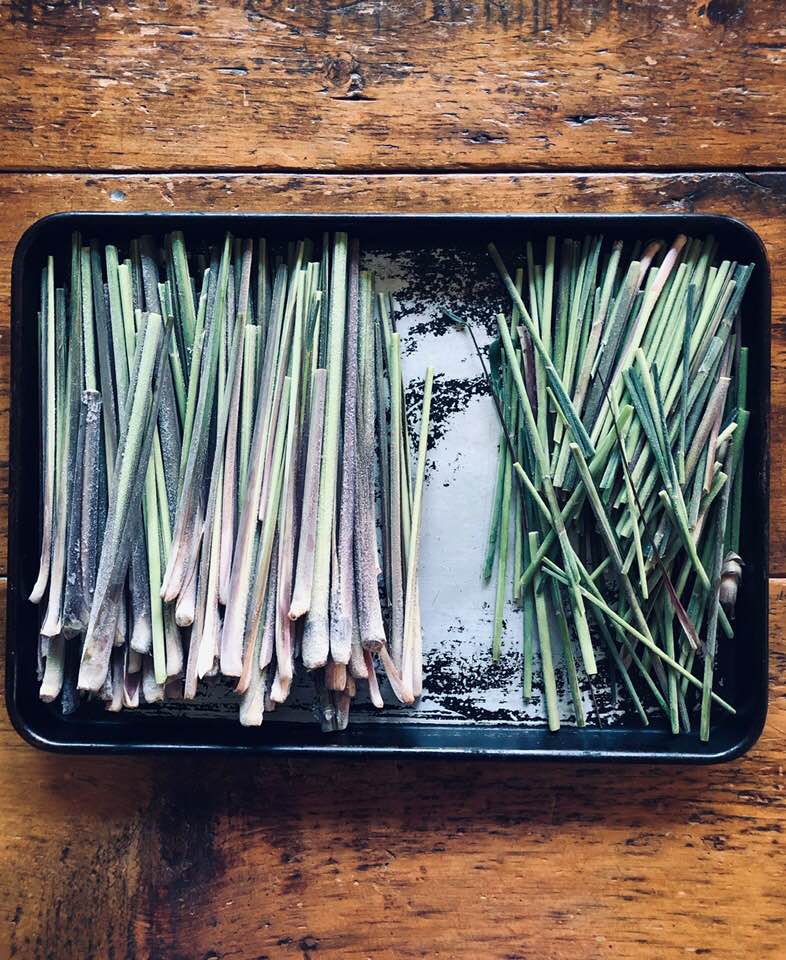
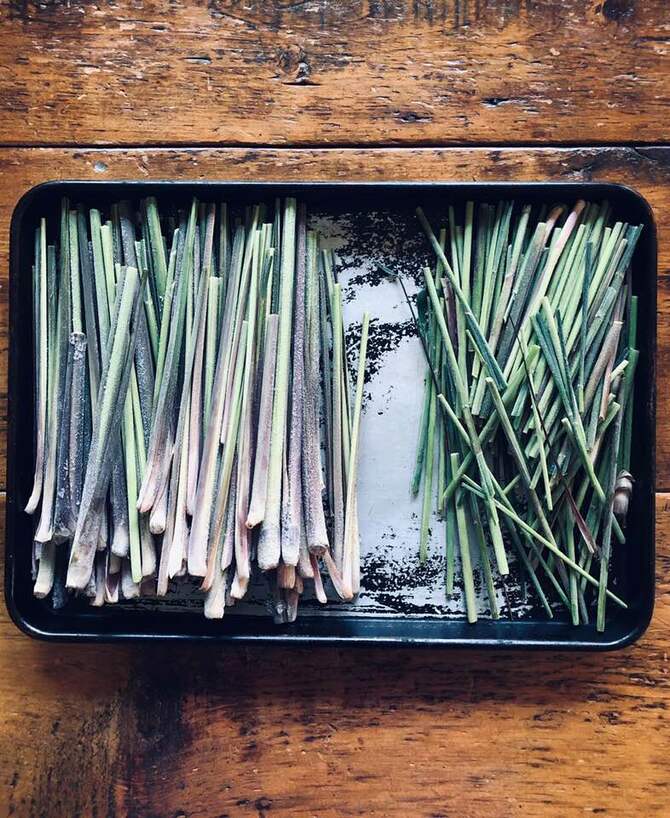
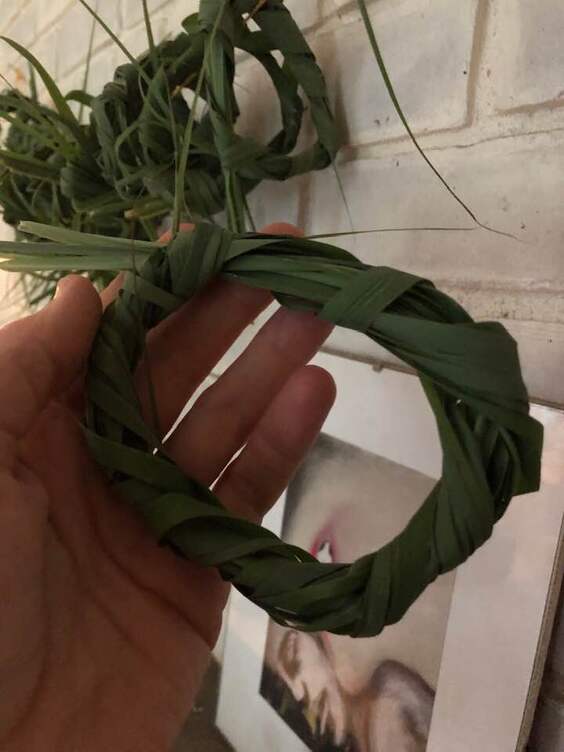

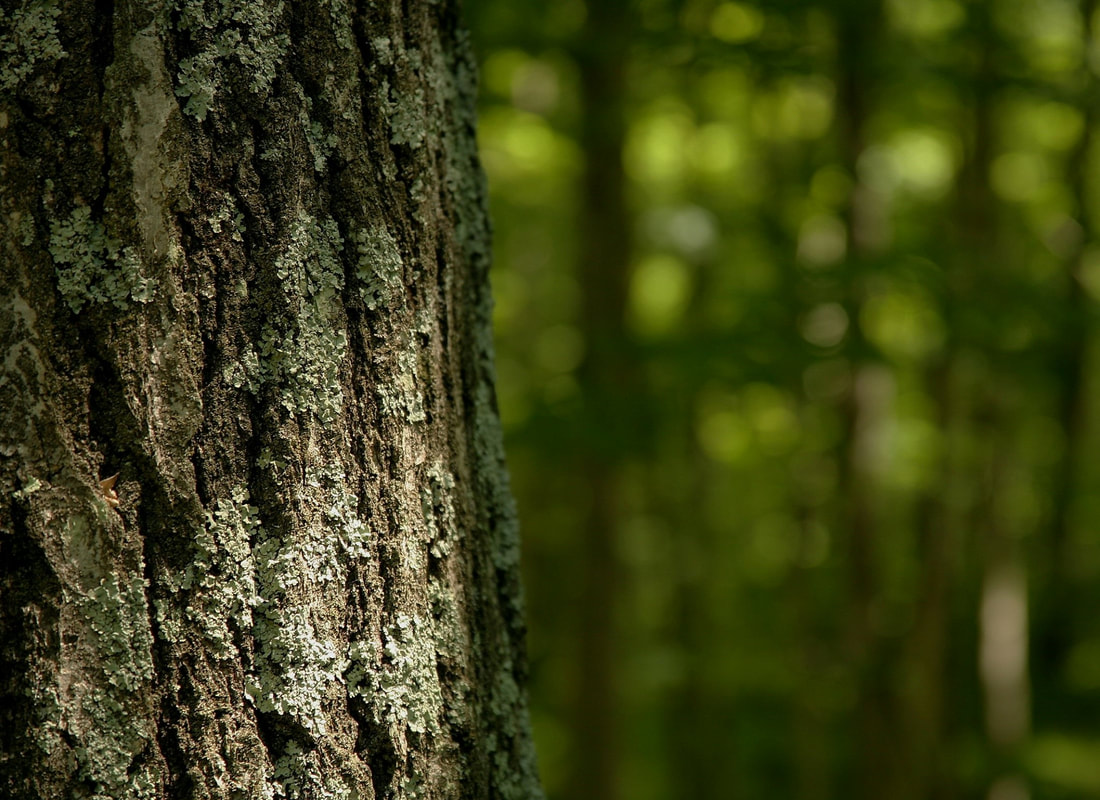
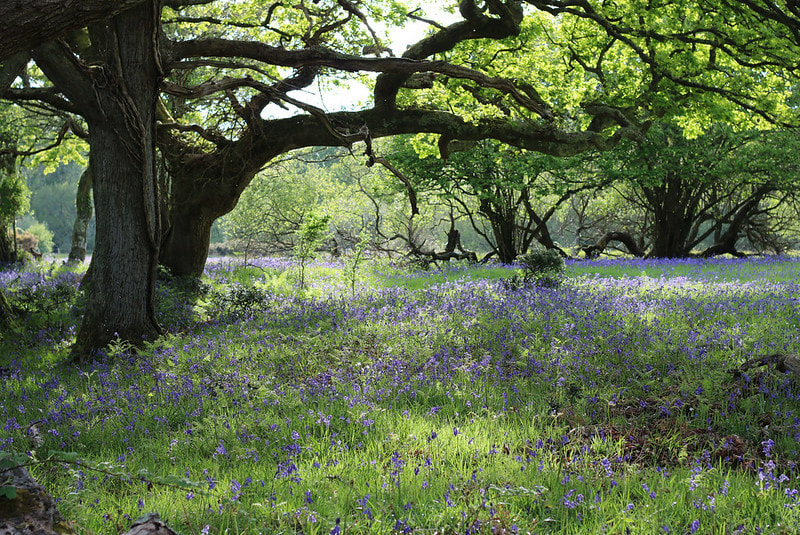
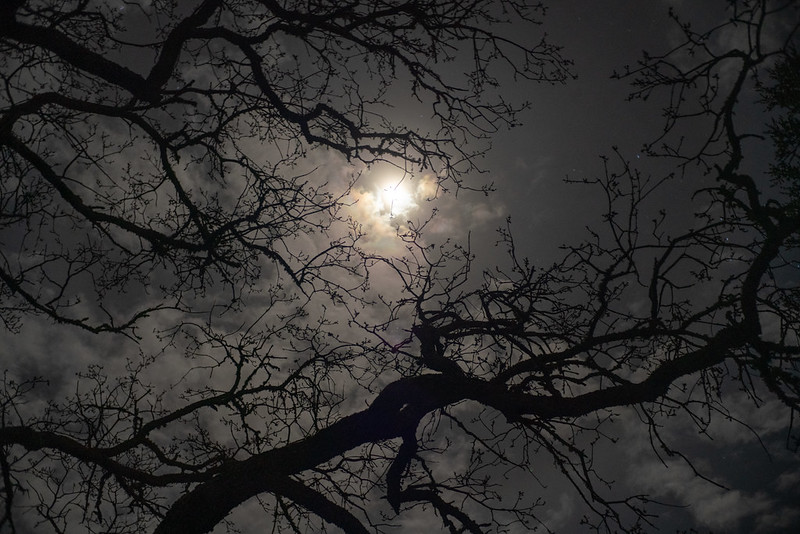
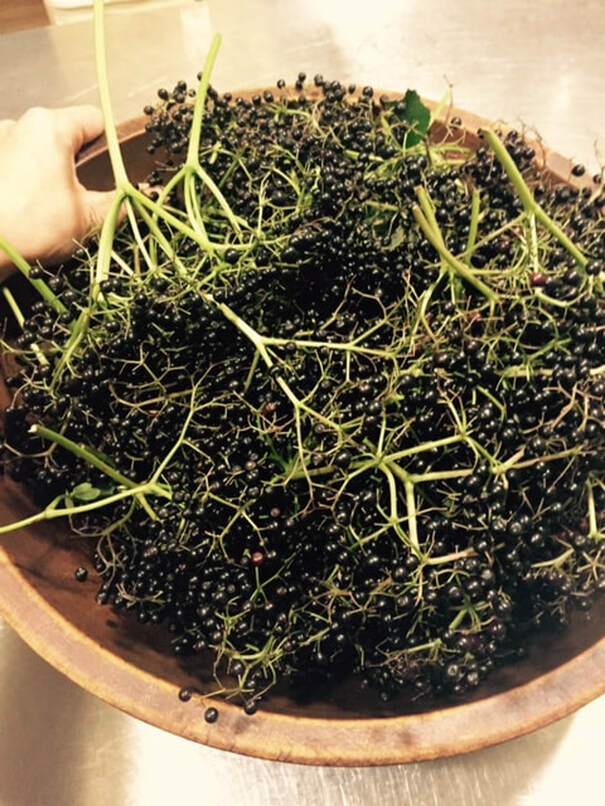
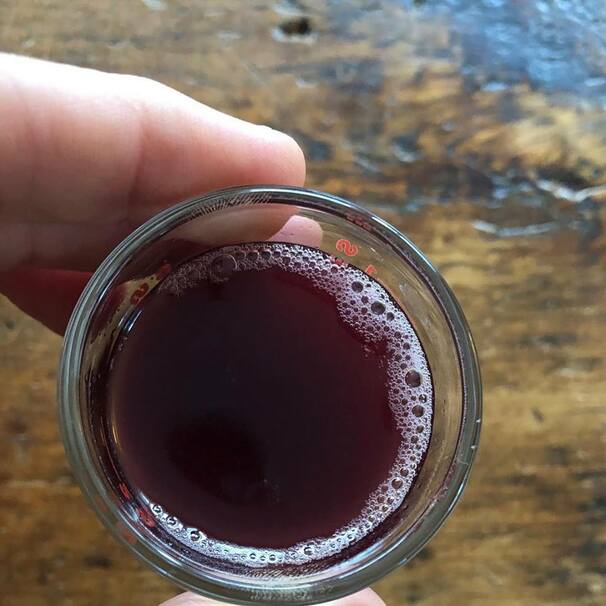
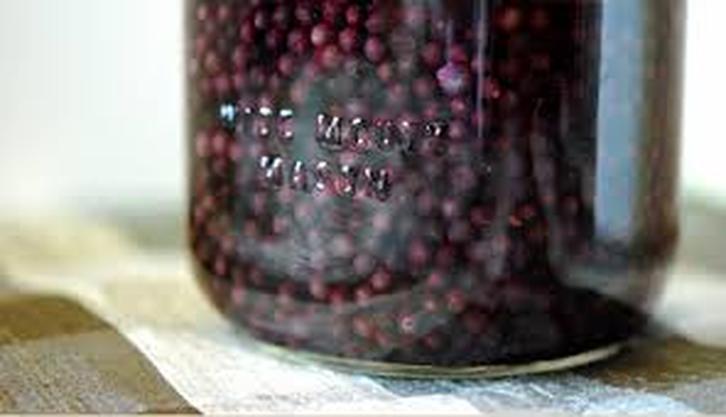
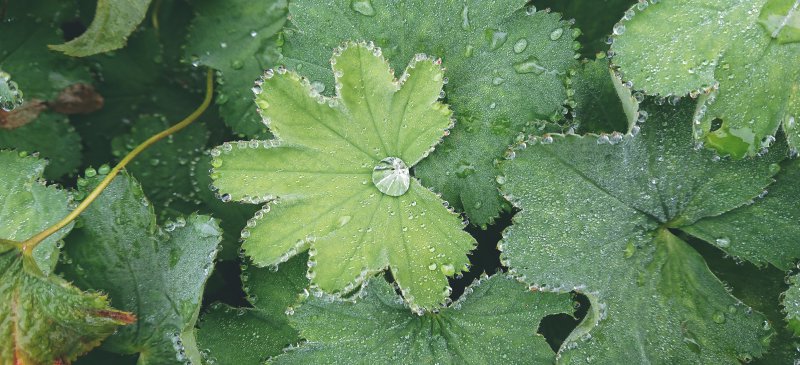
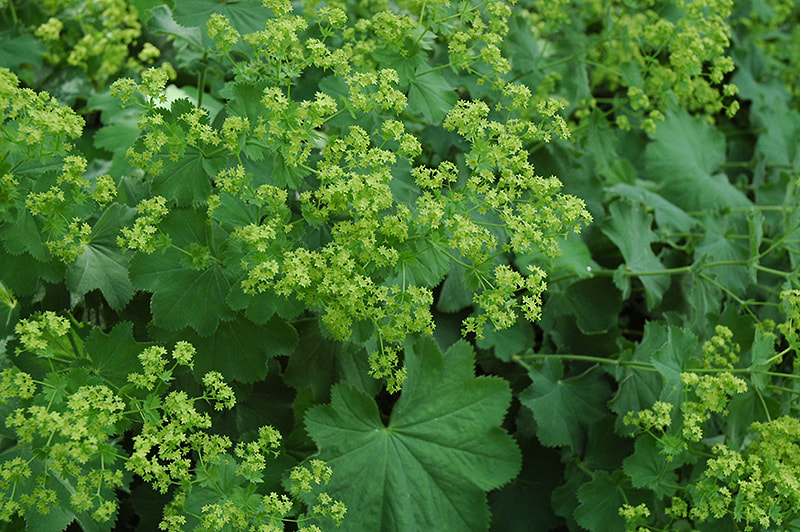
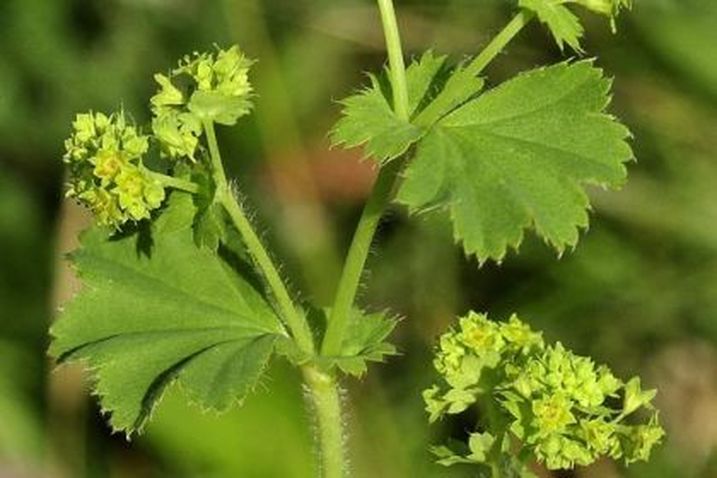
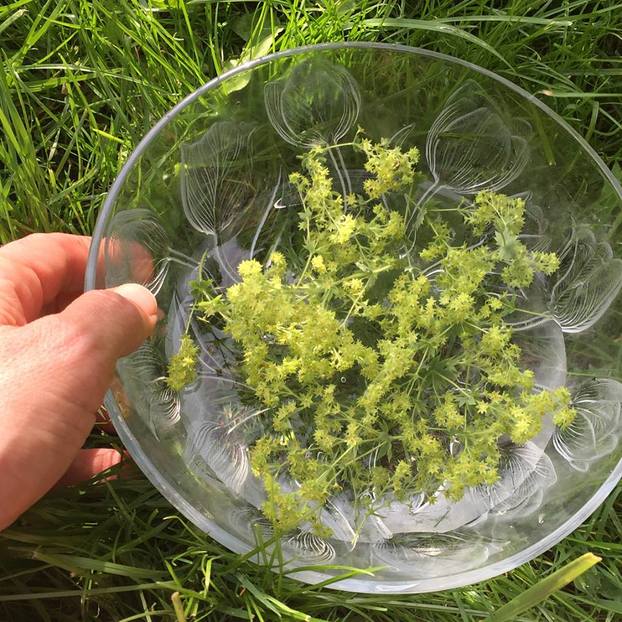
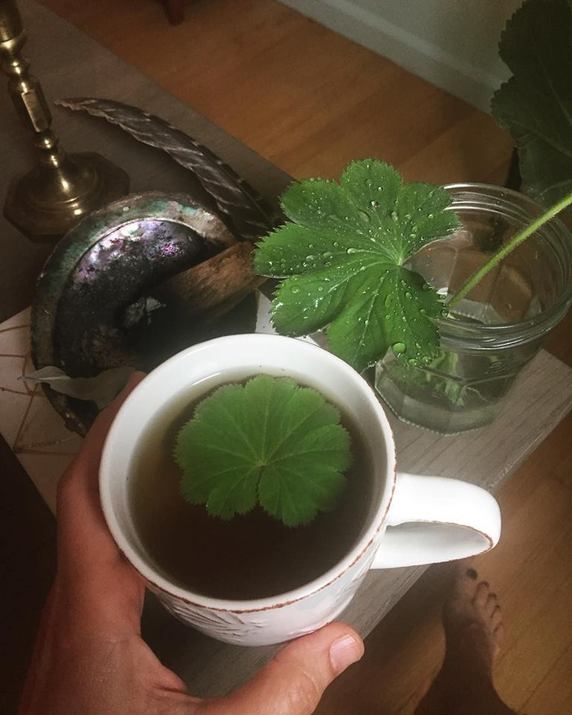
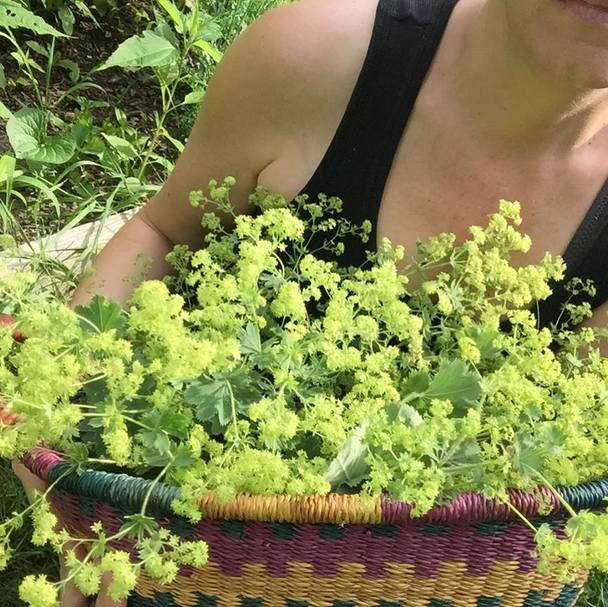
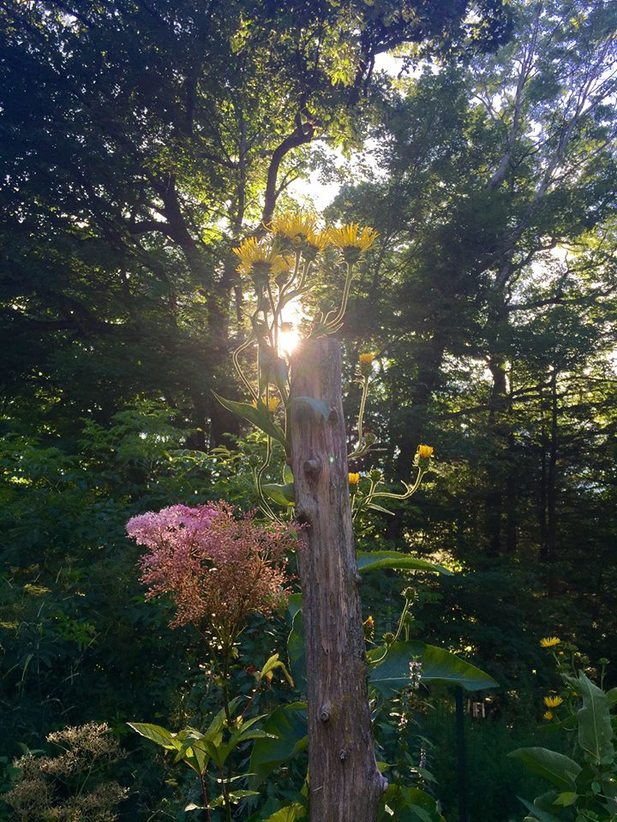
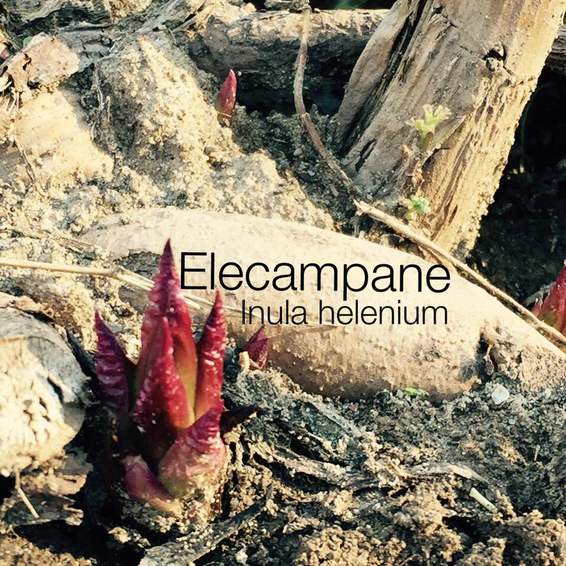

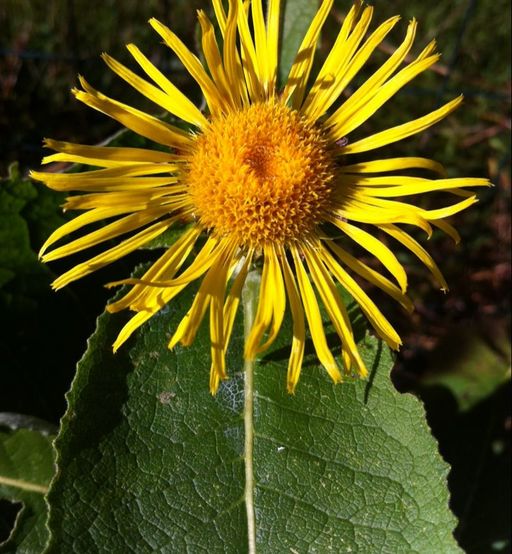
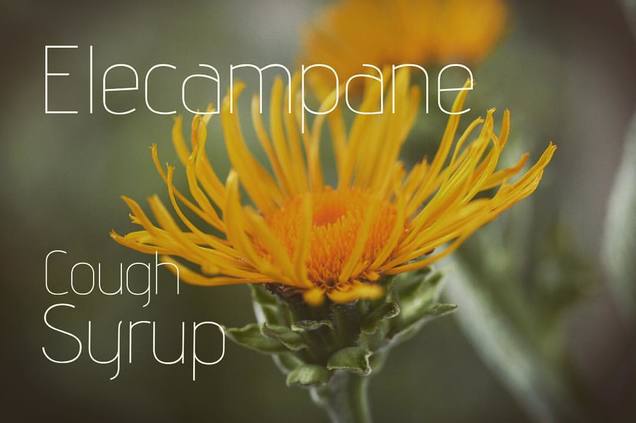
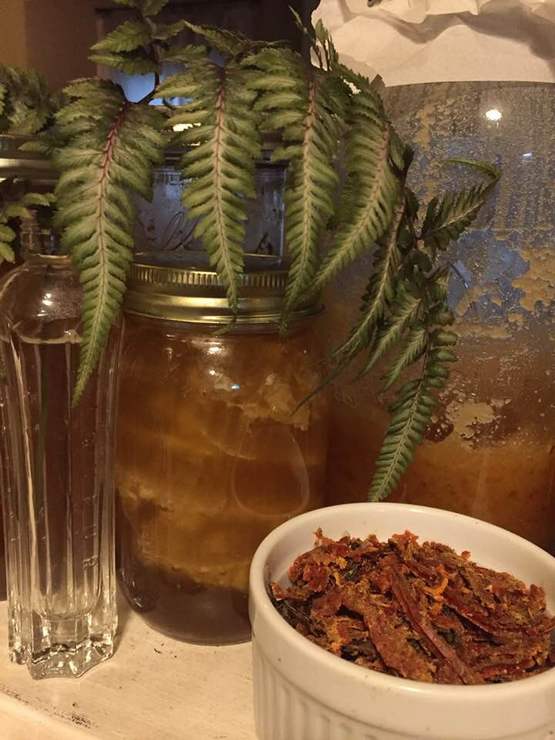
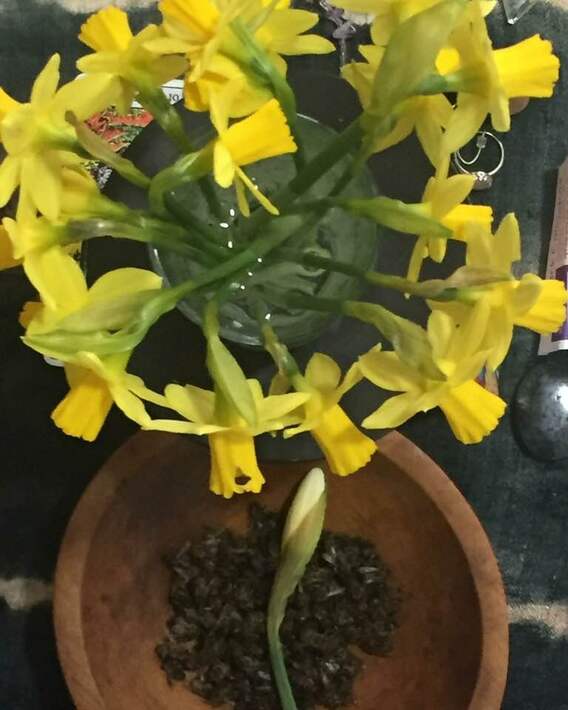
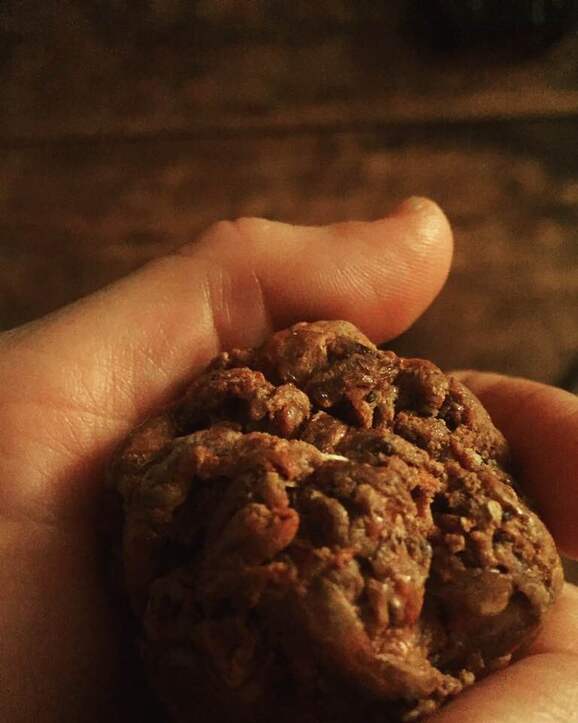
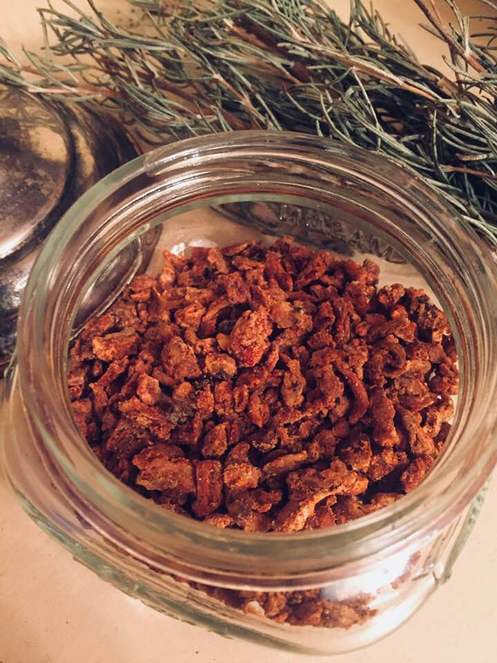
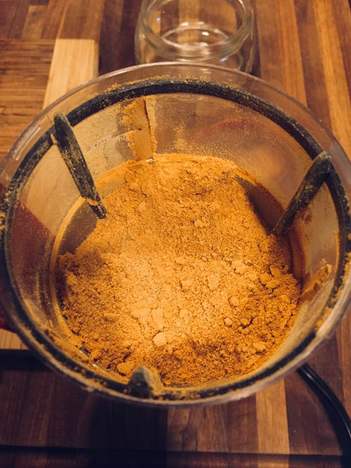
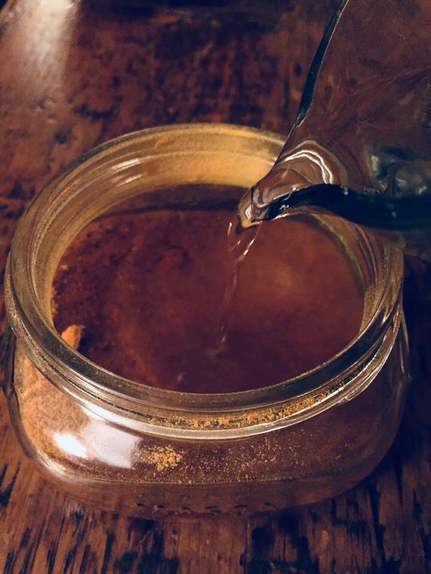
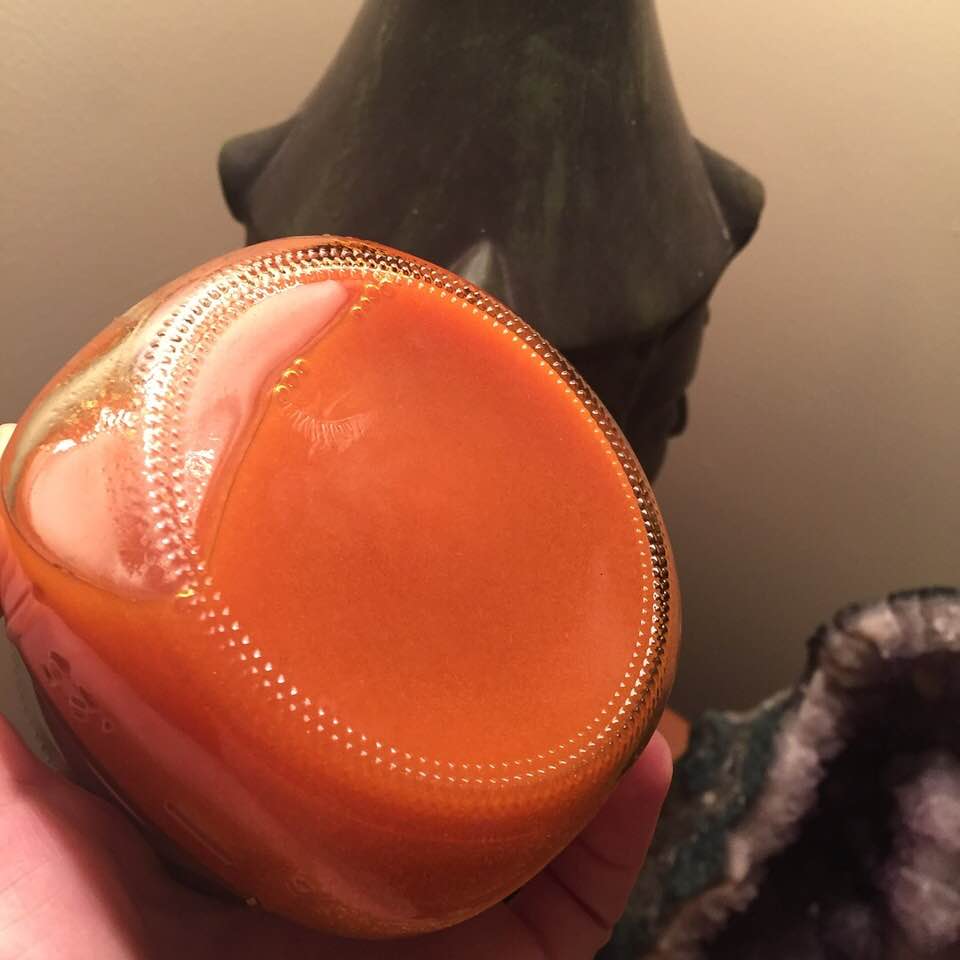
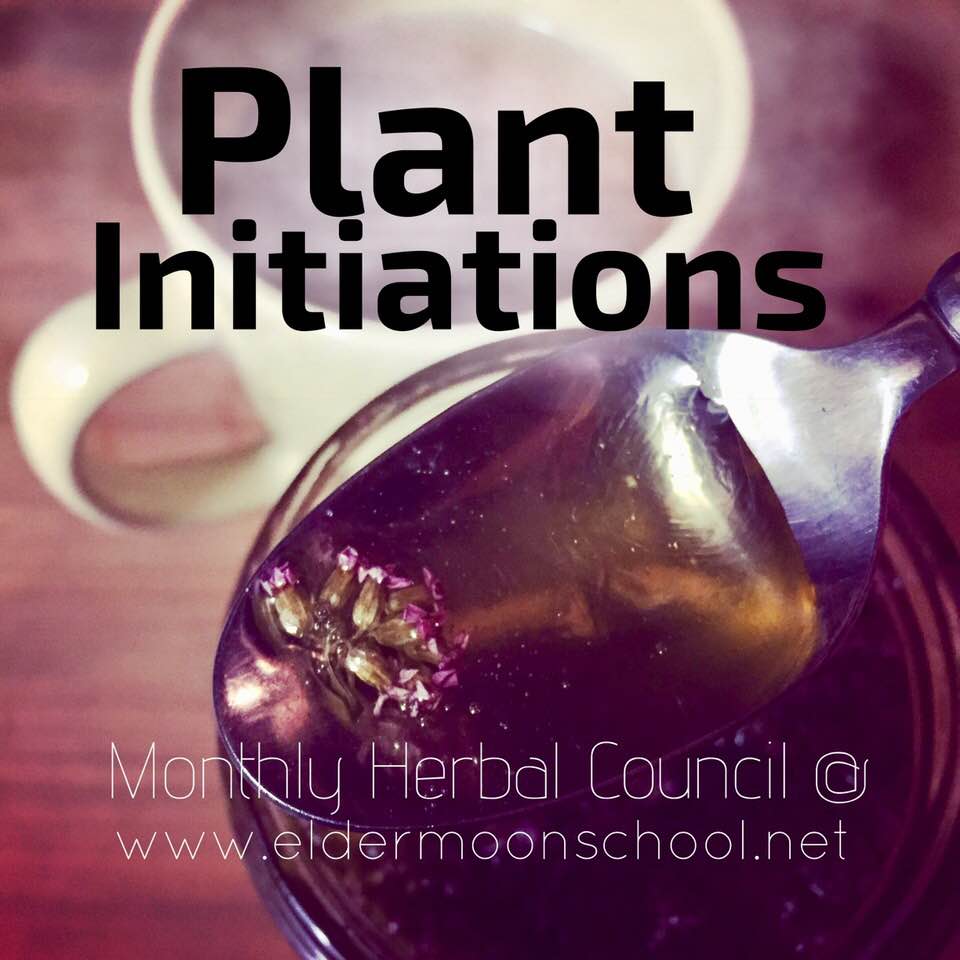
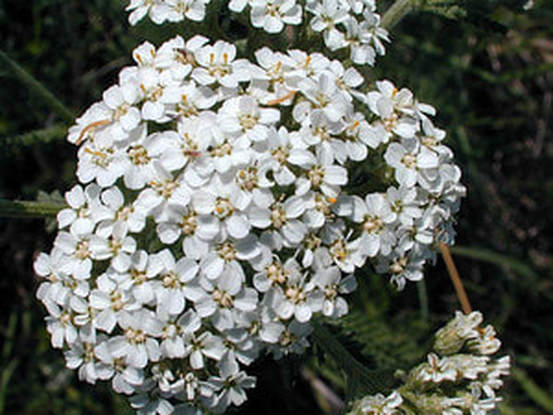
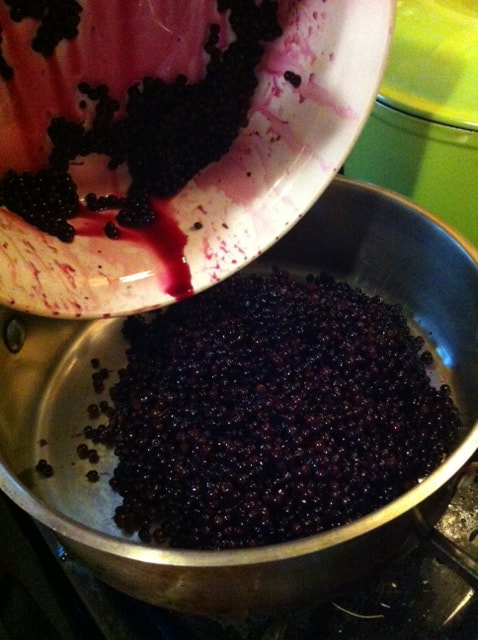

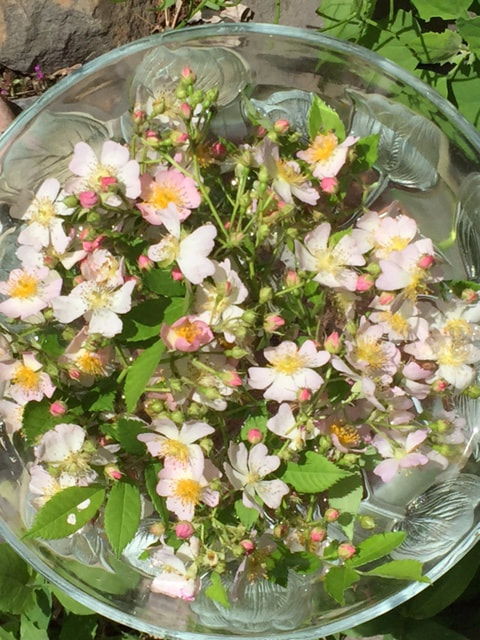
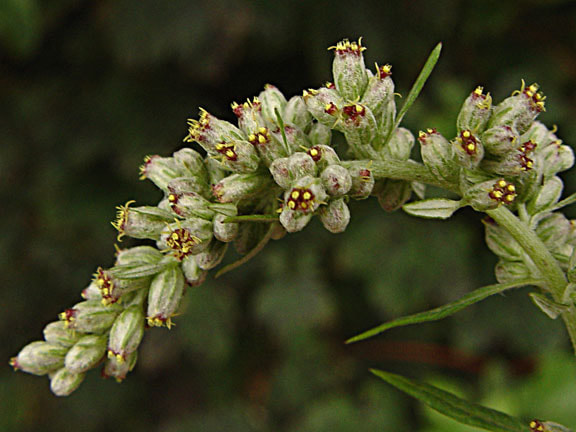
 RSS Feed
RSS Feed